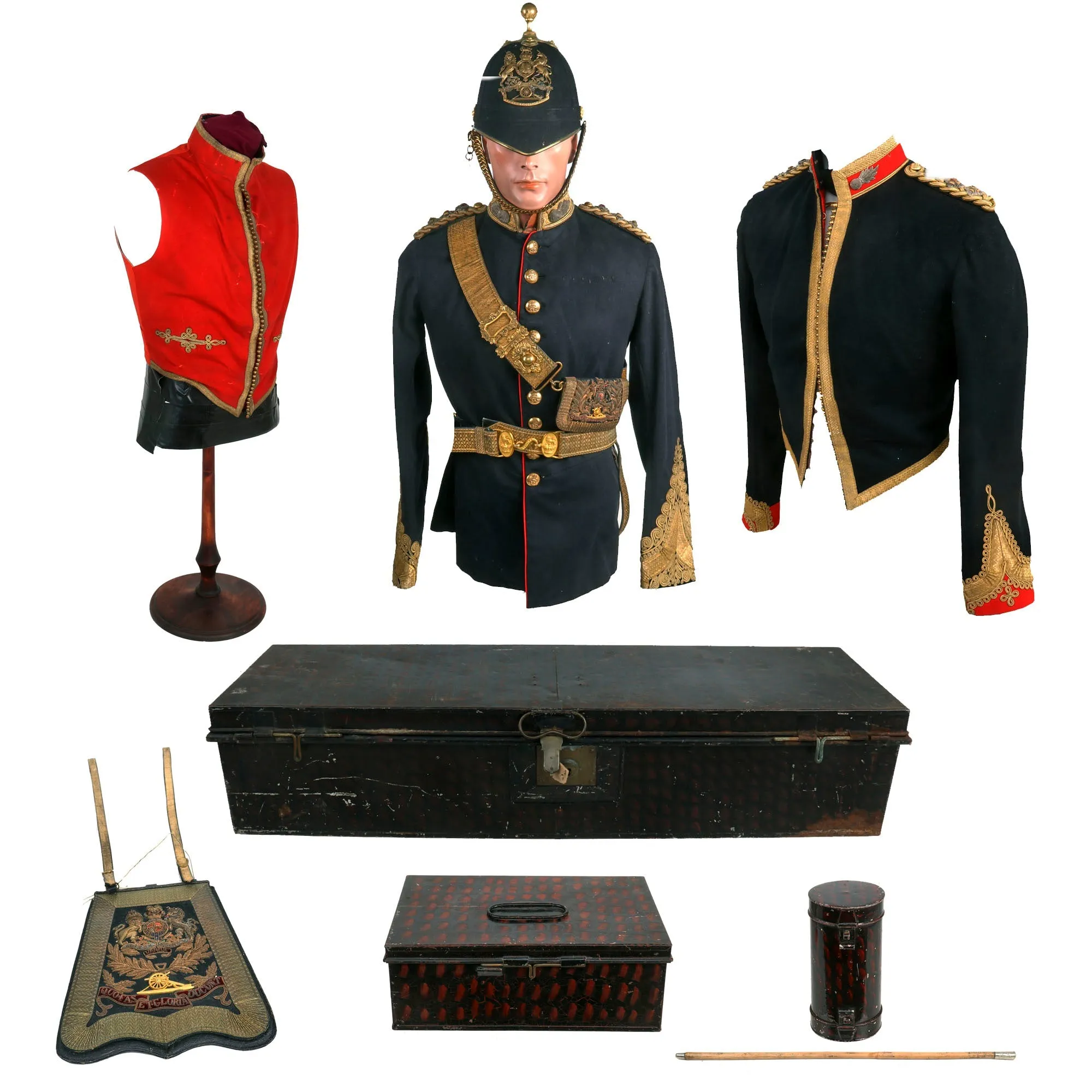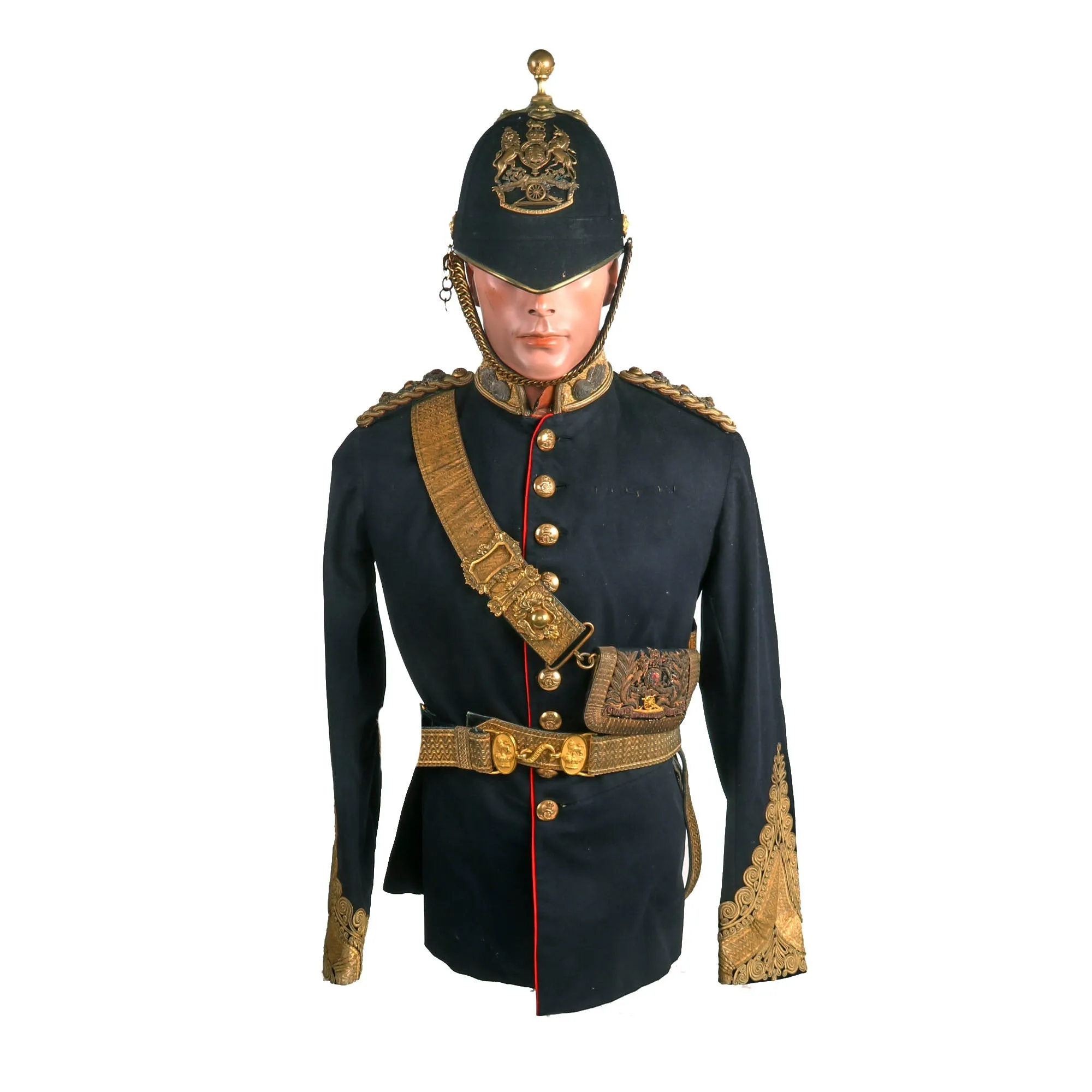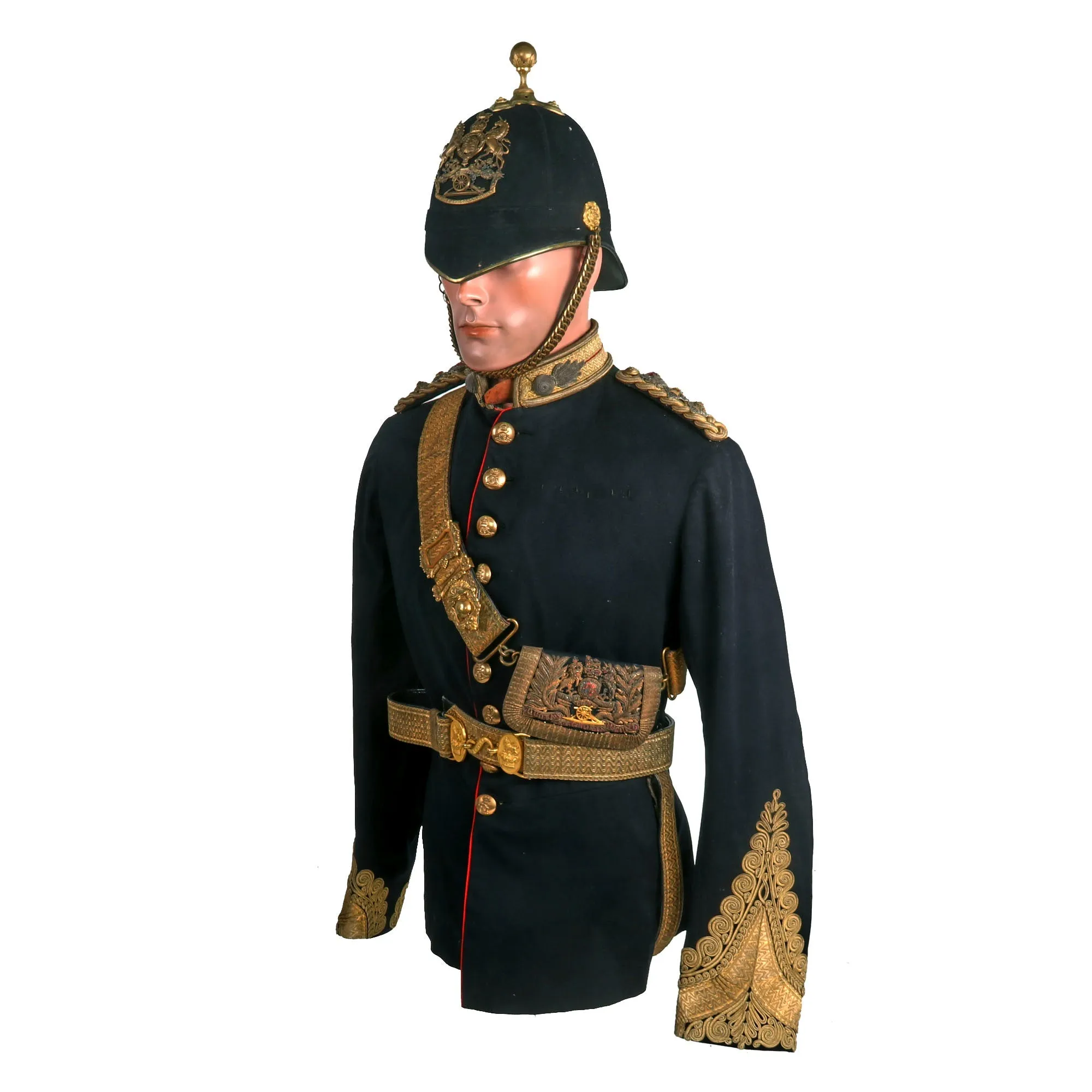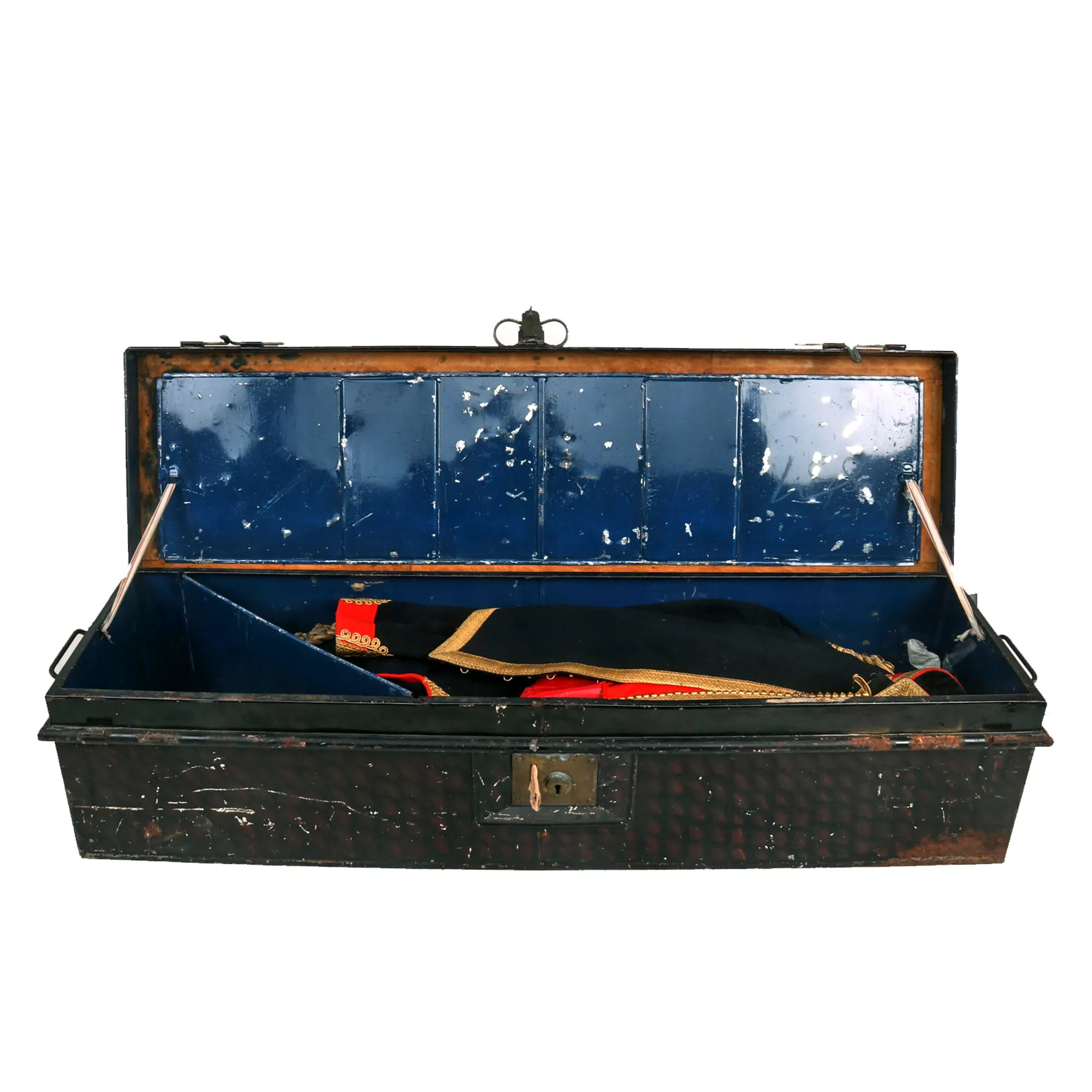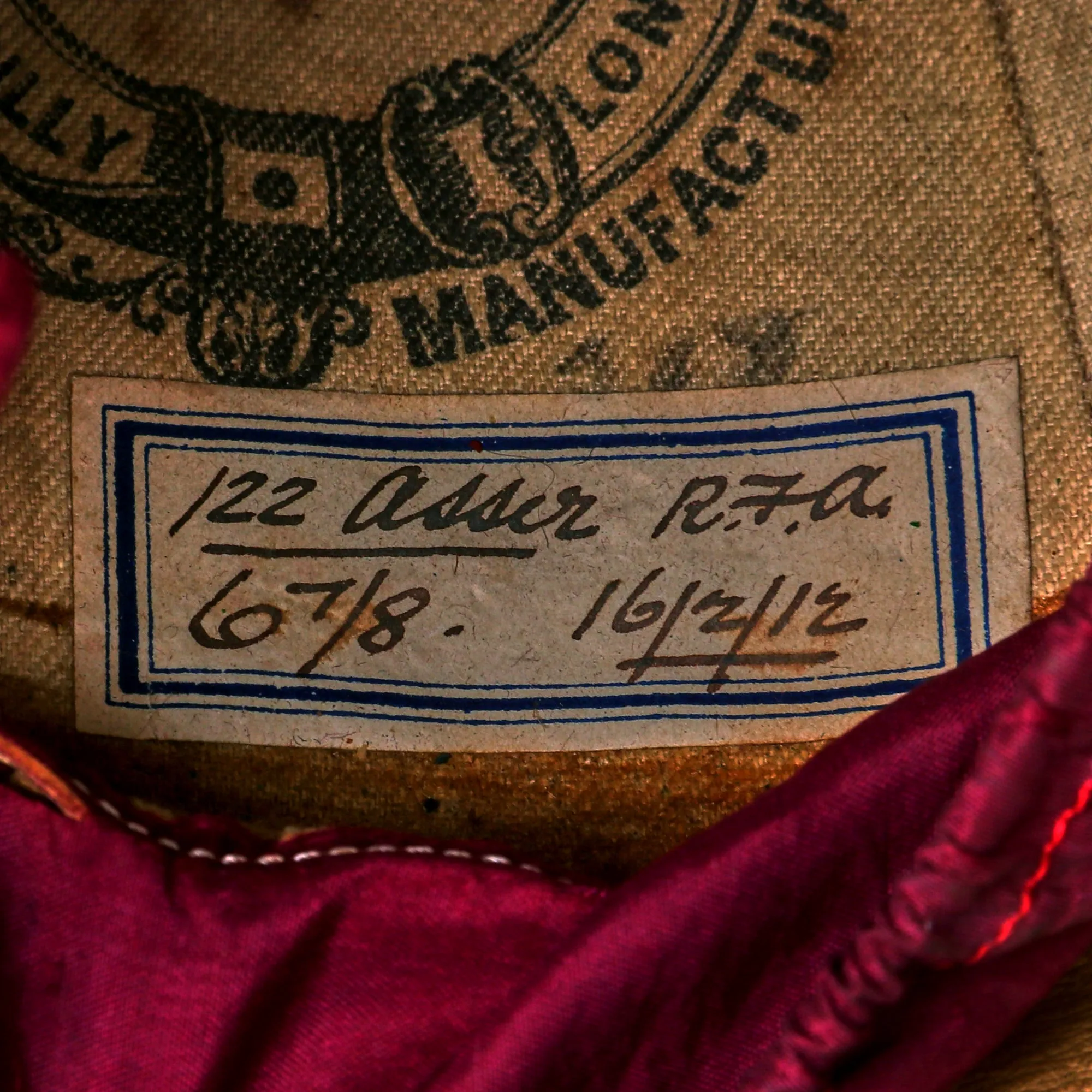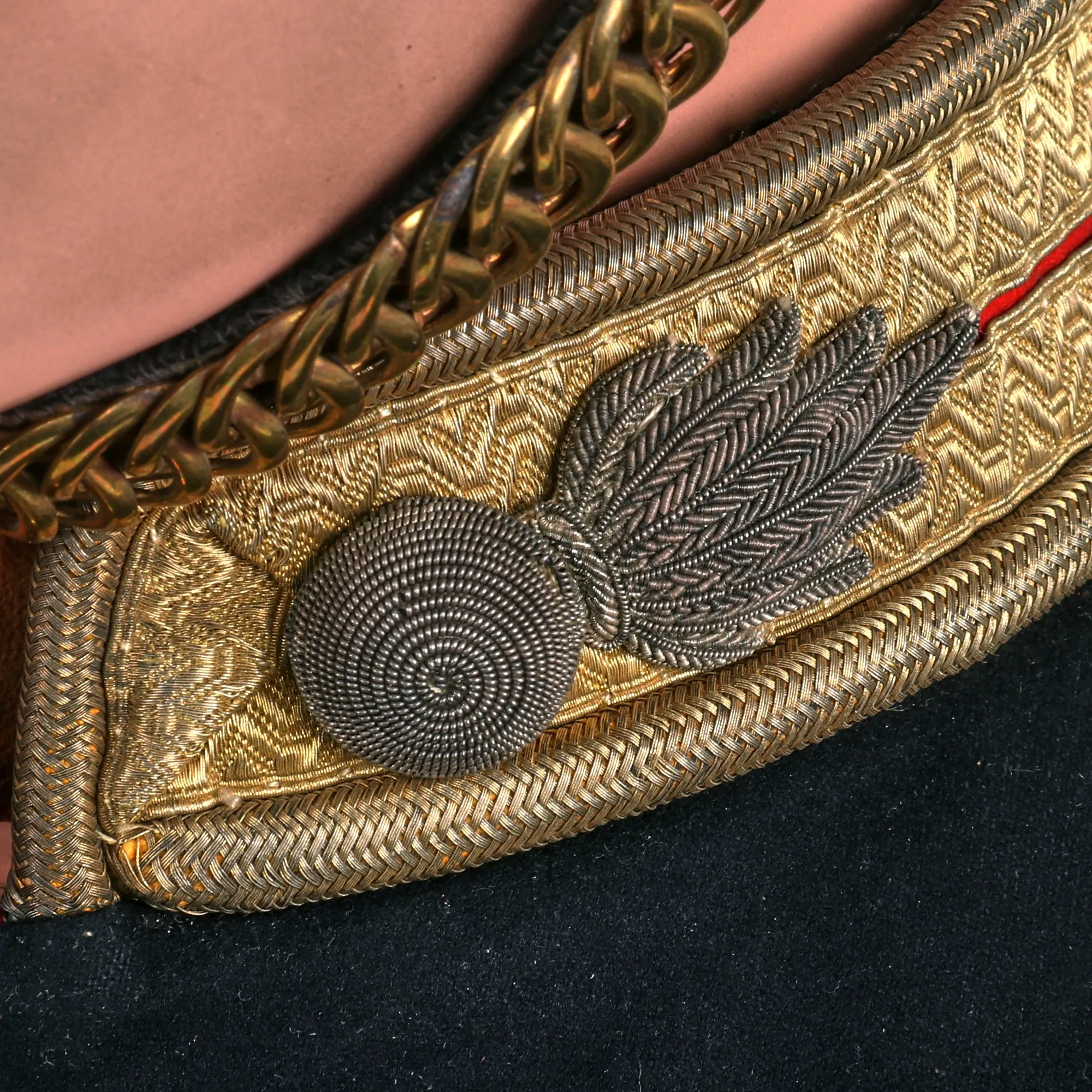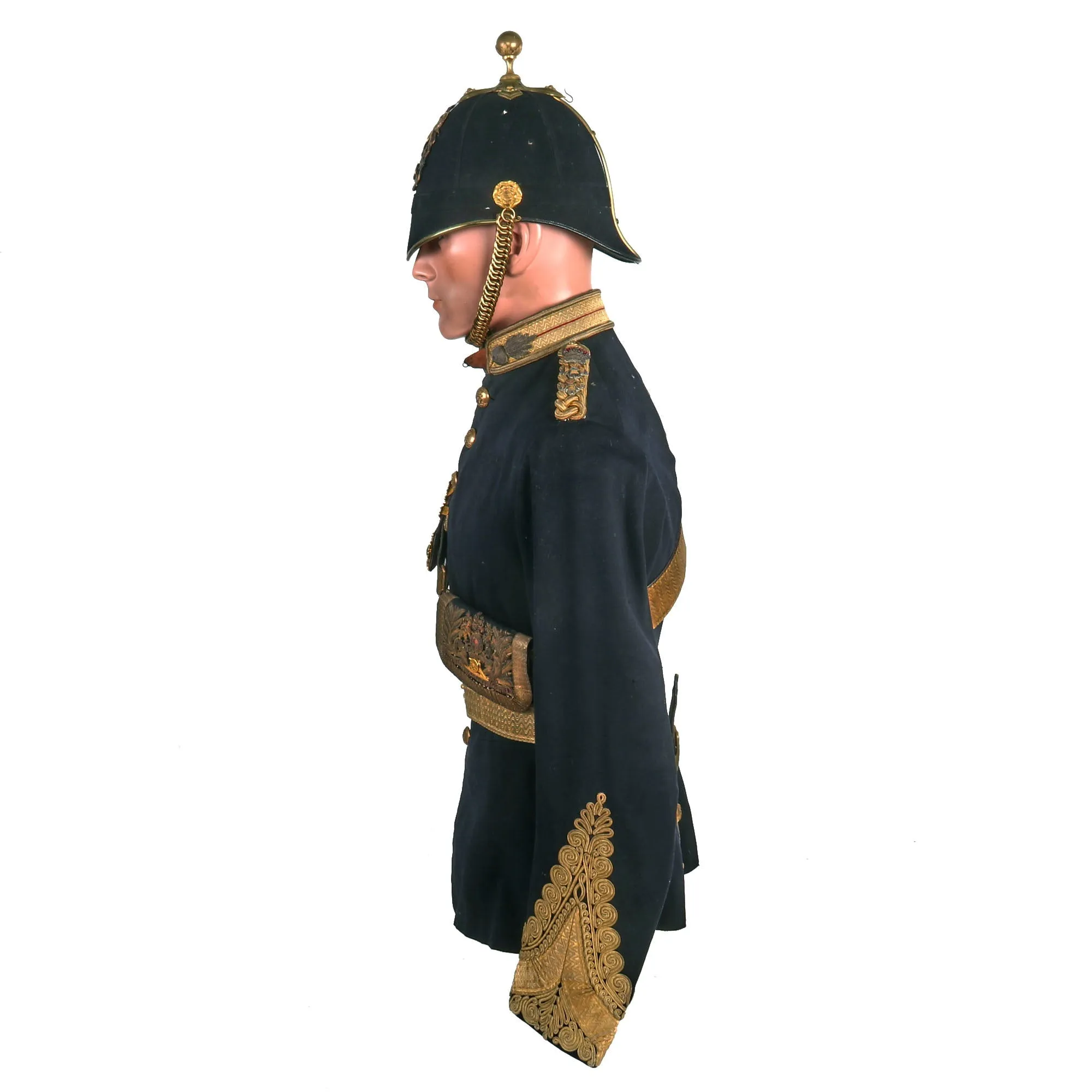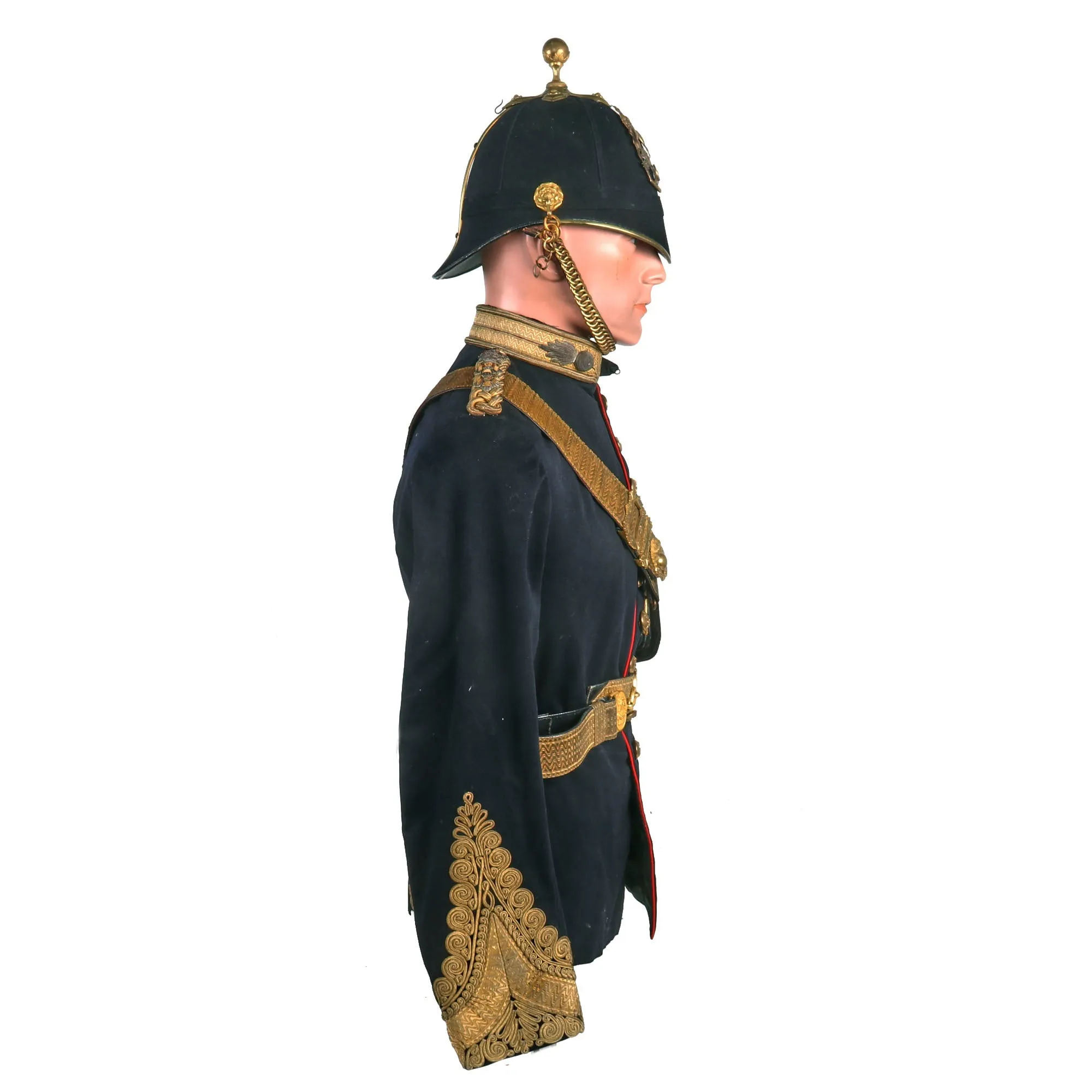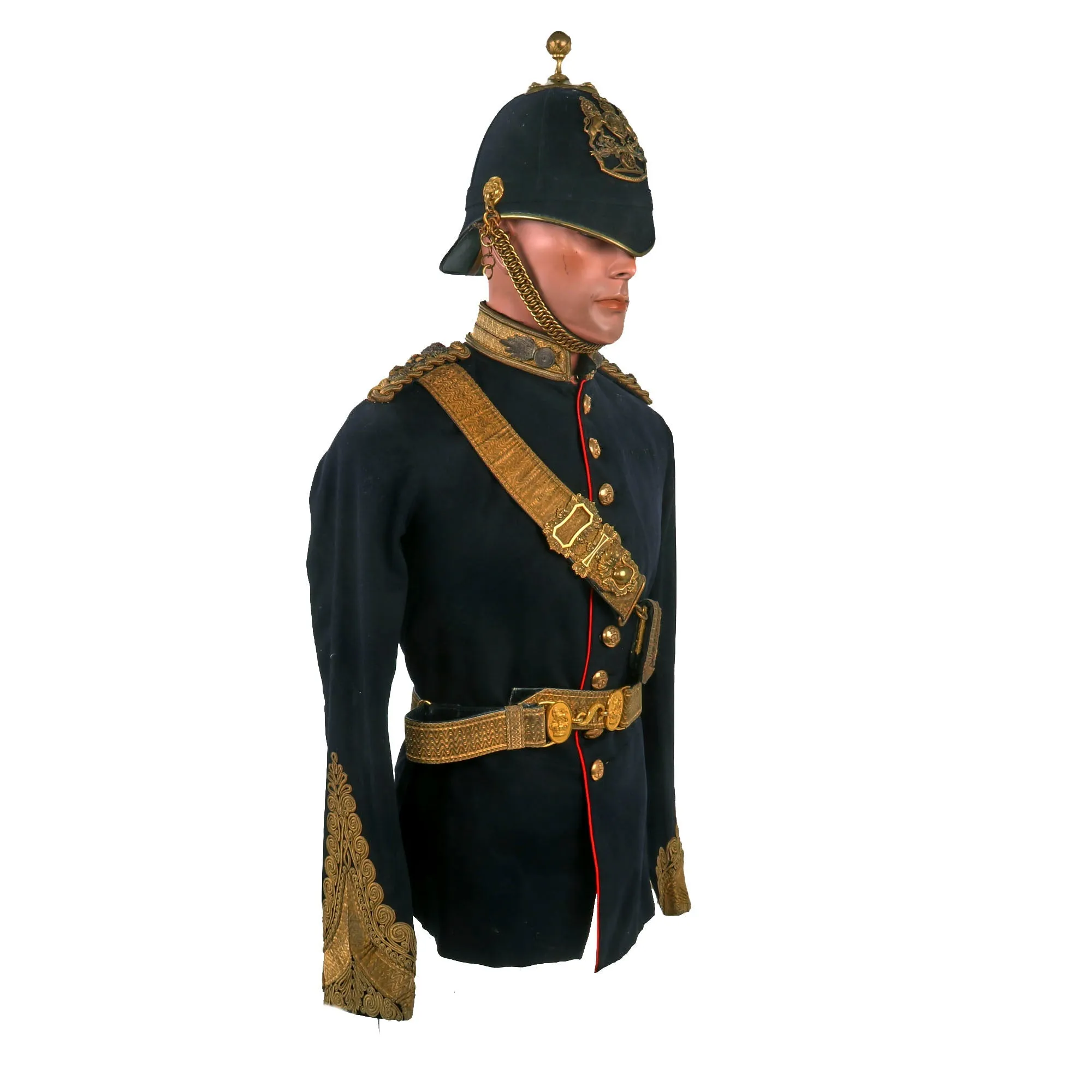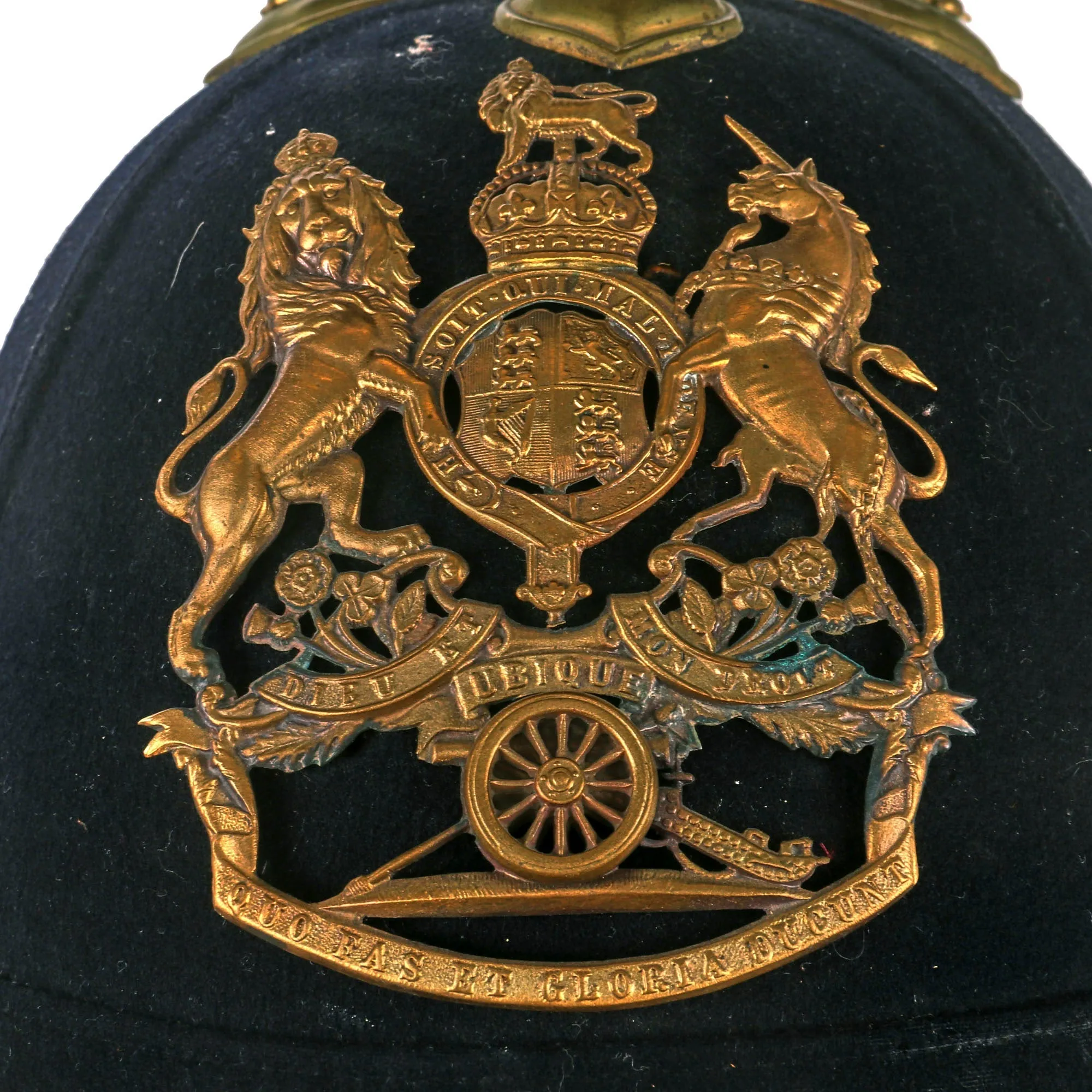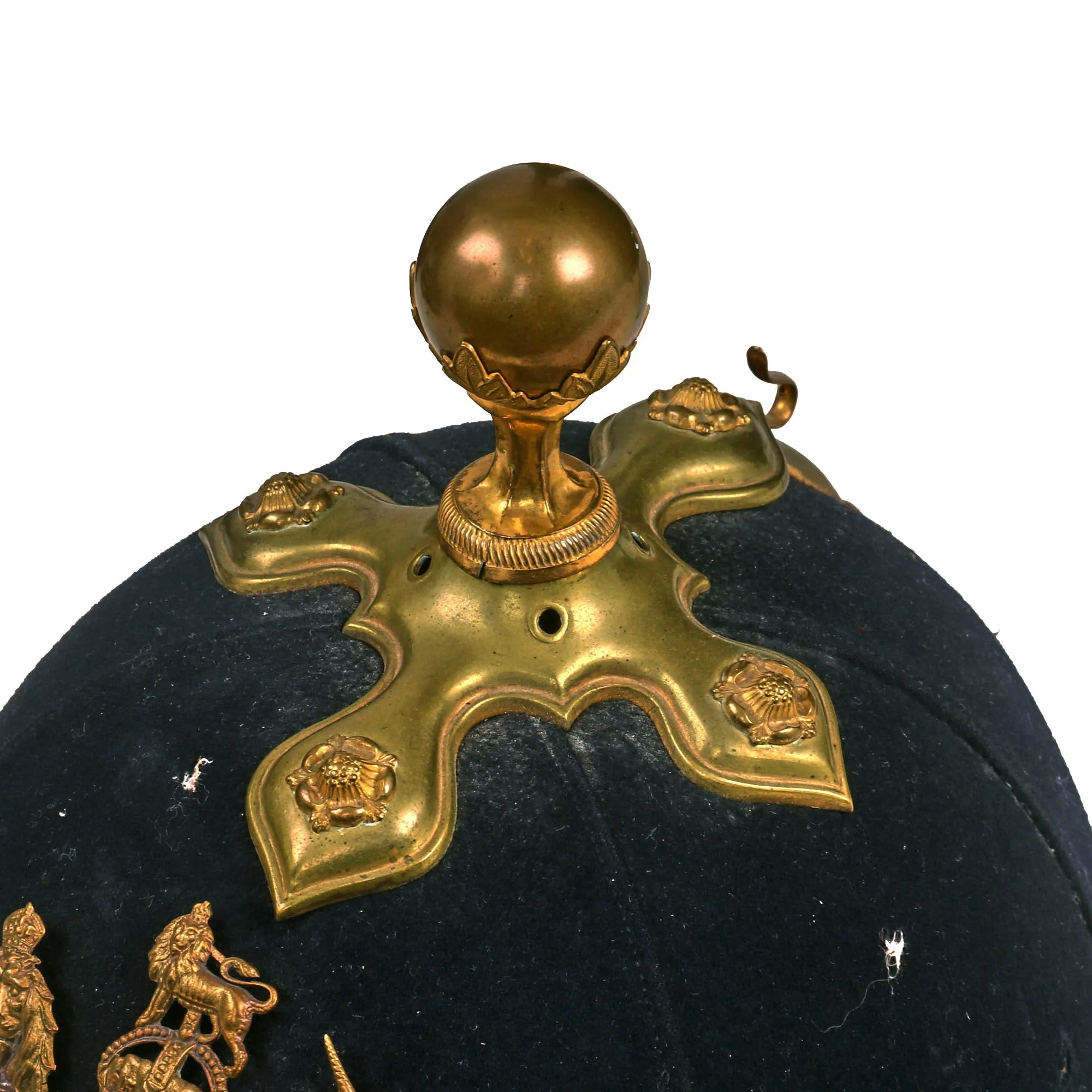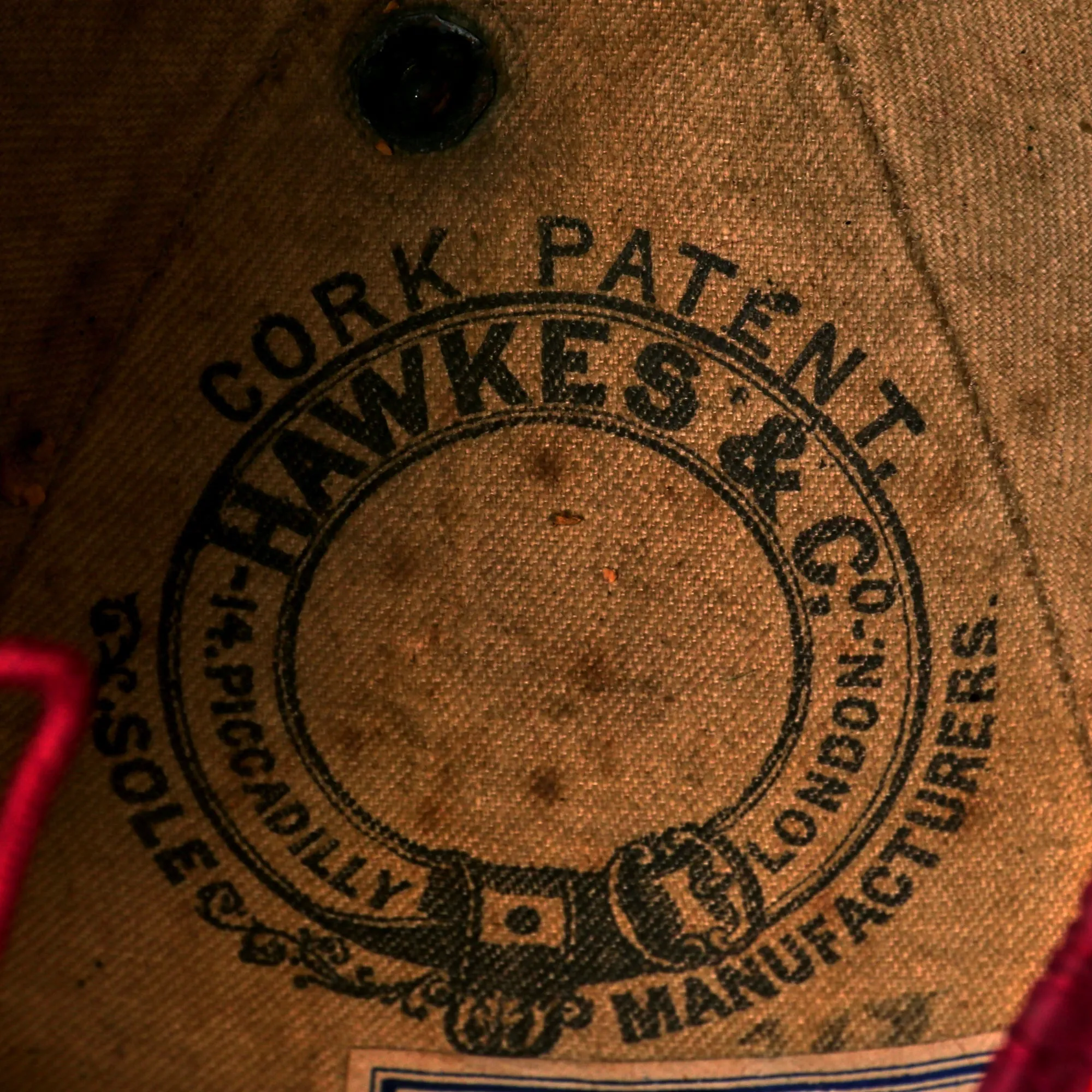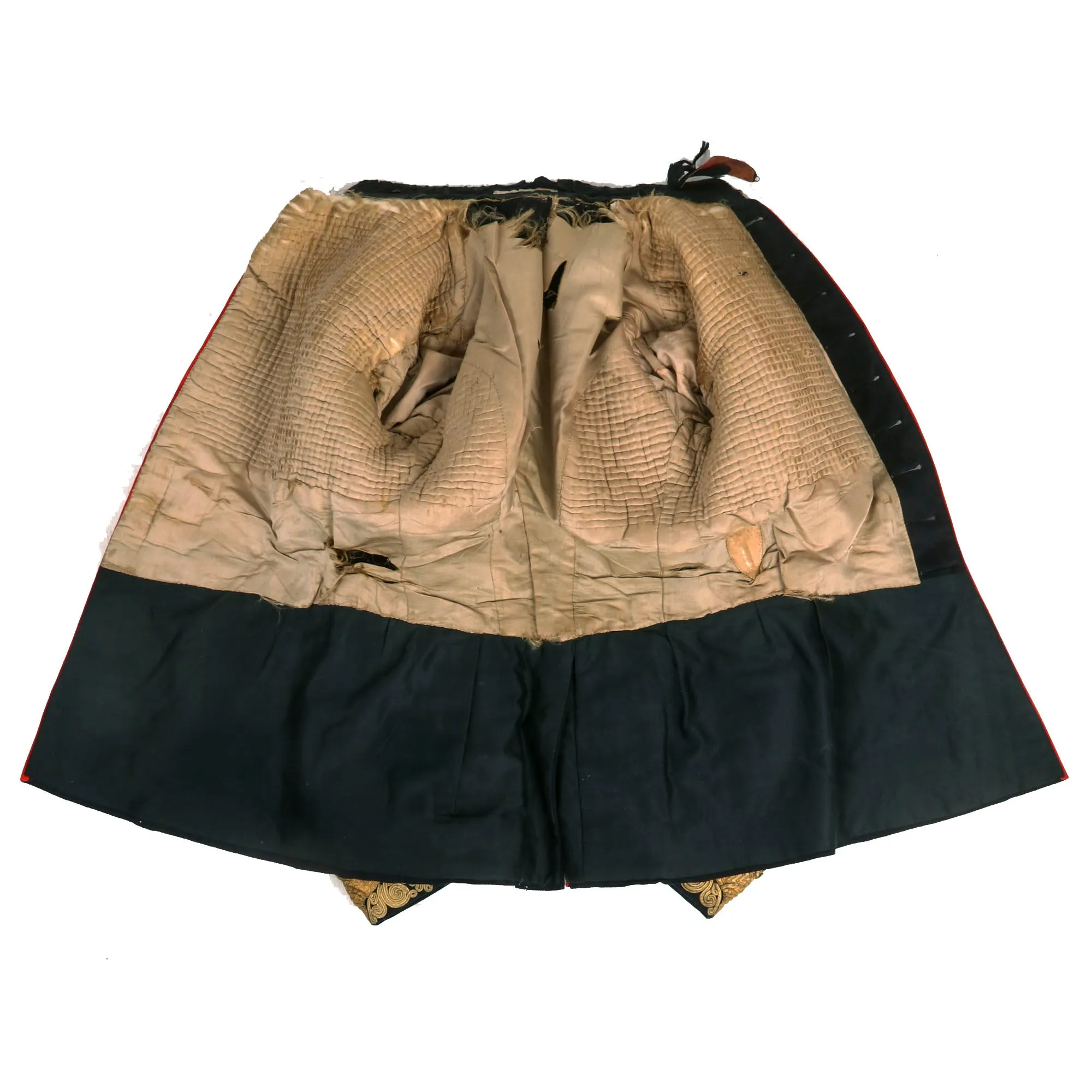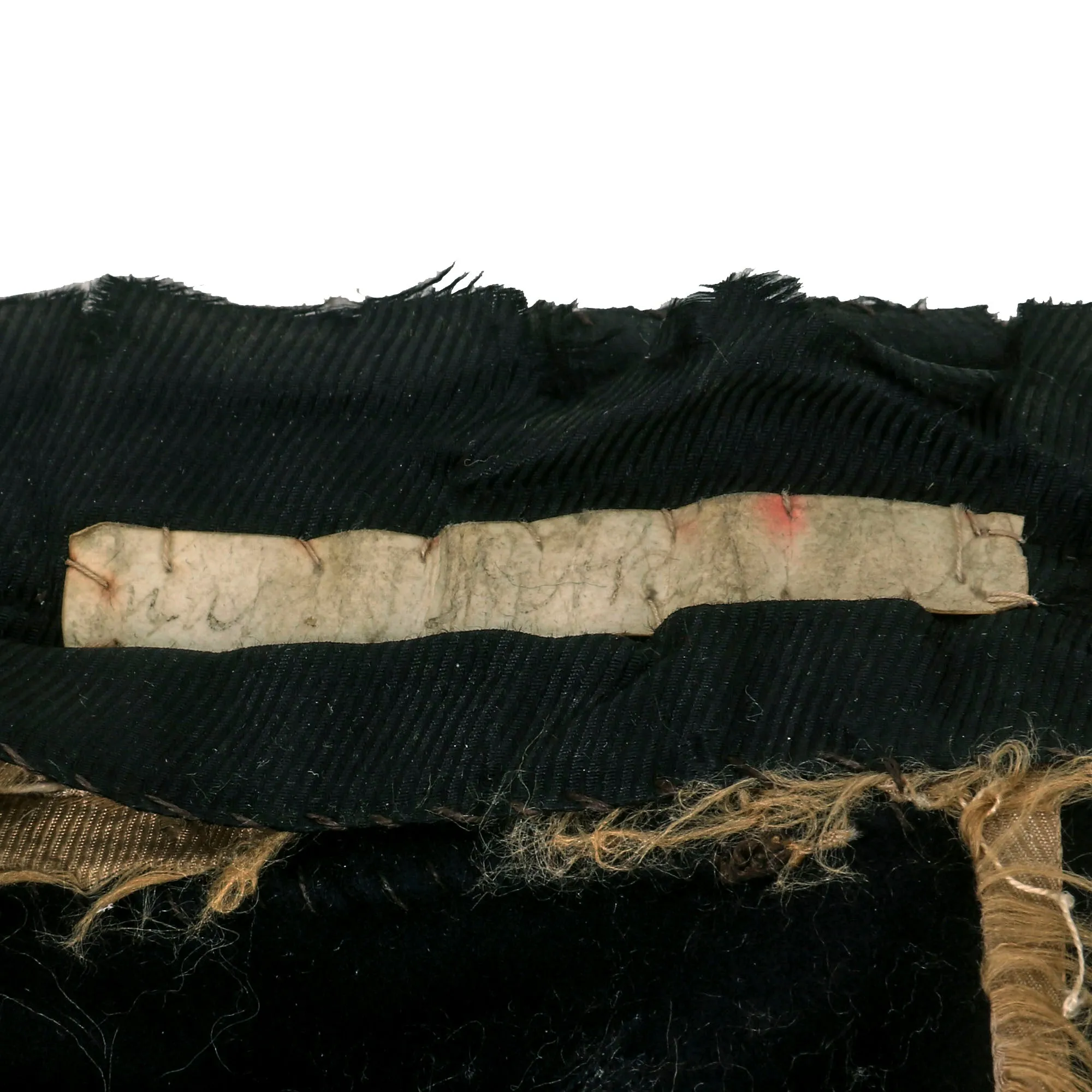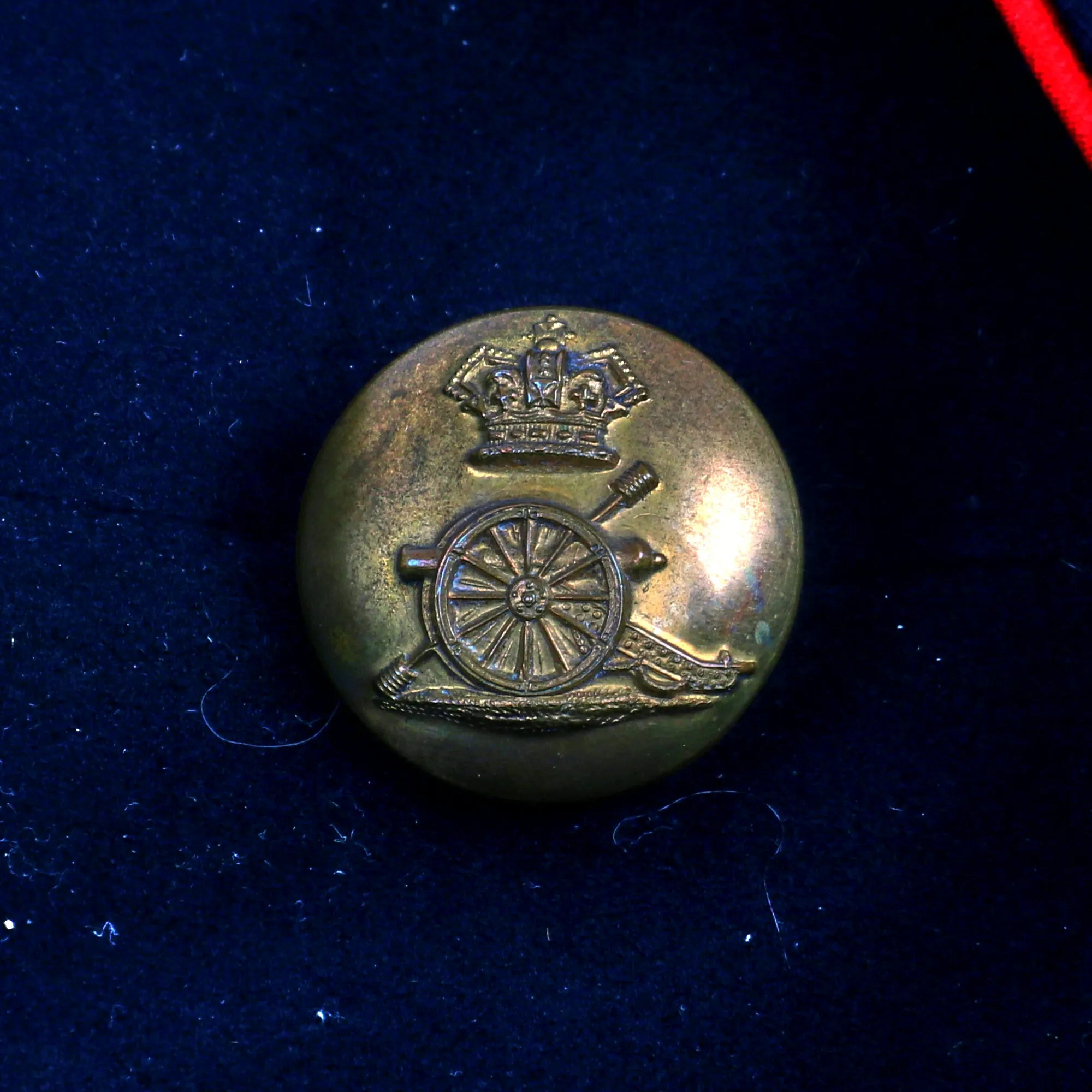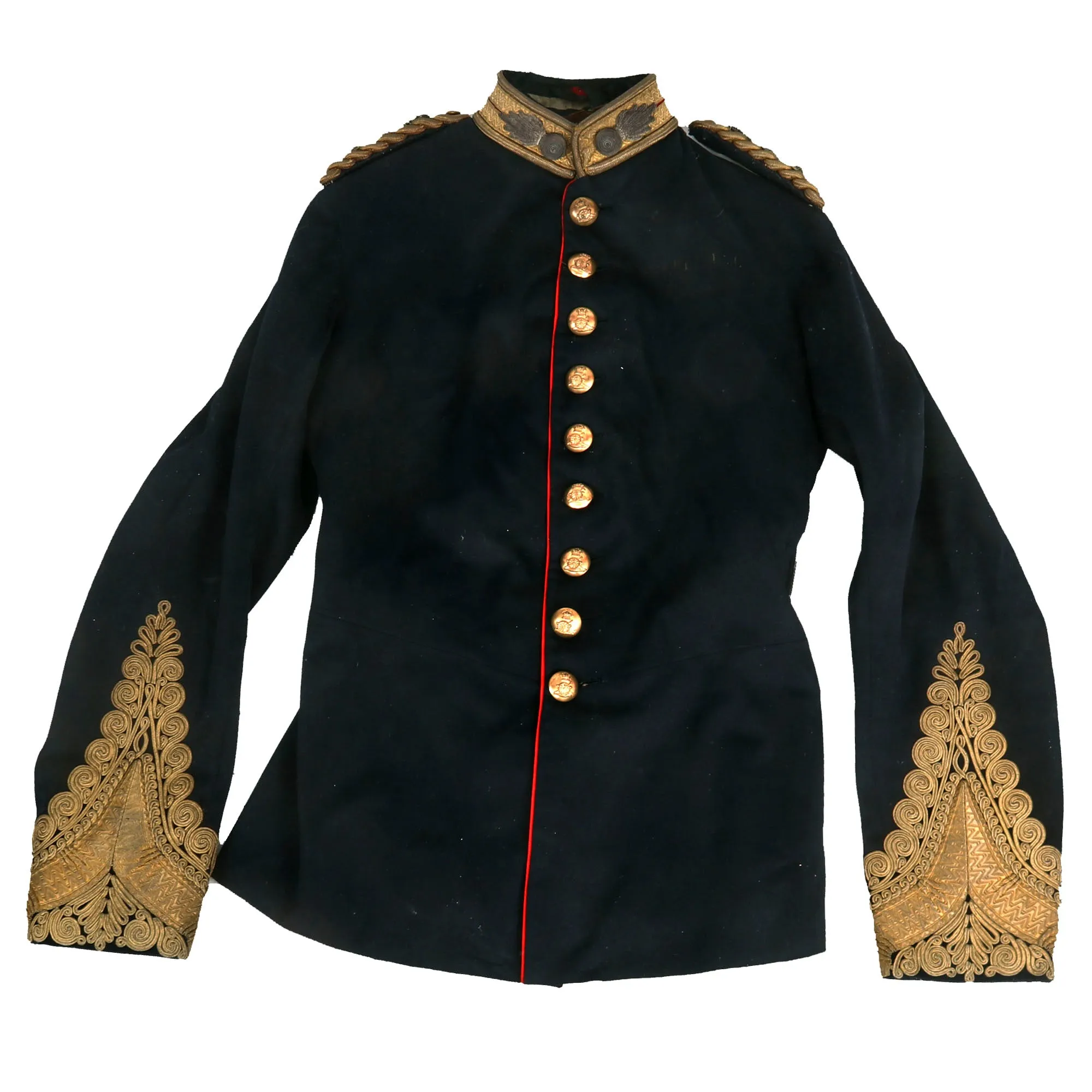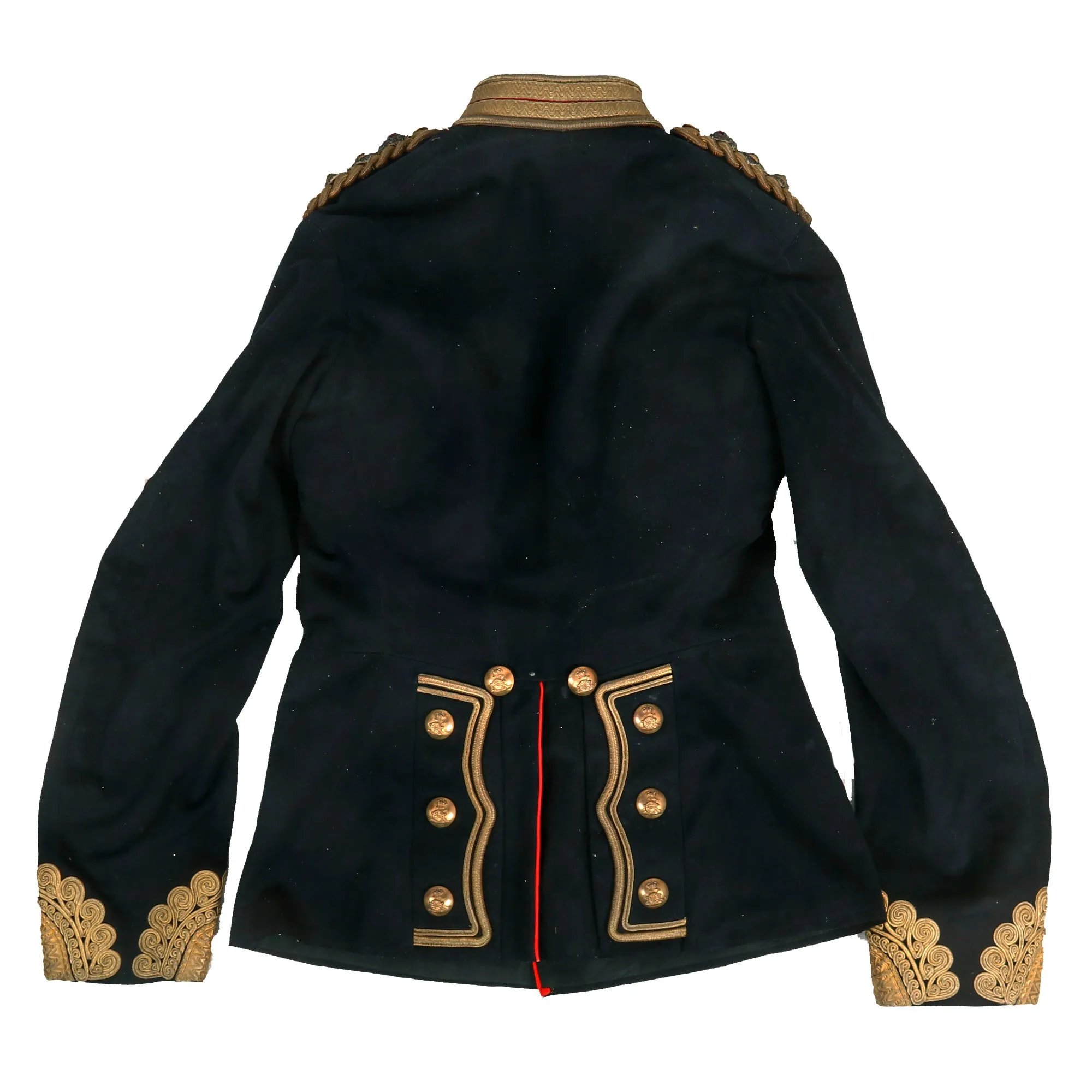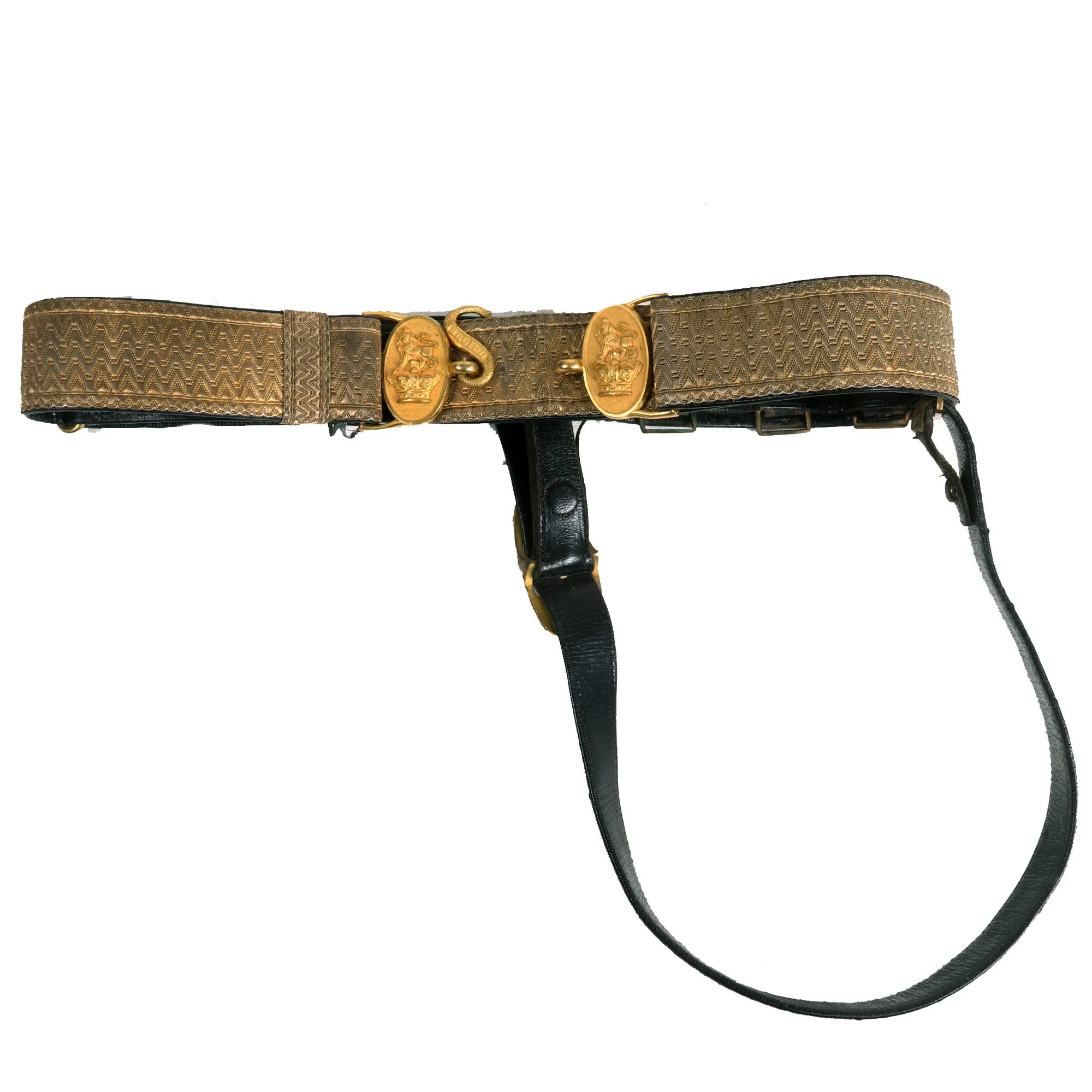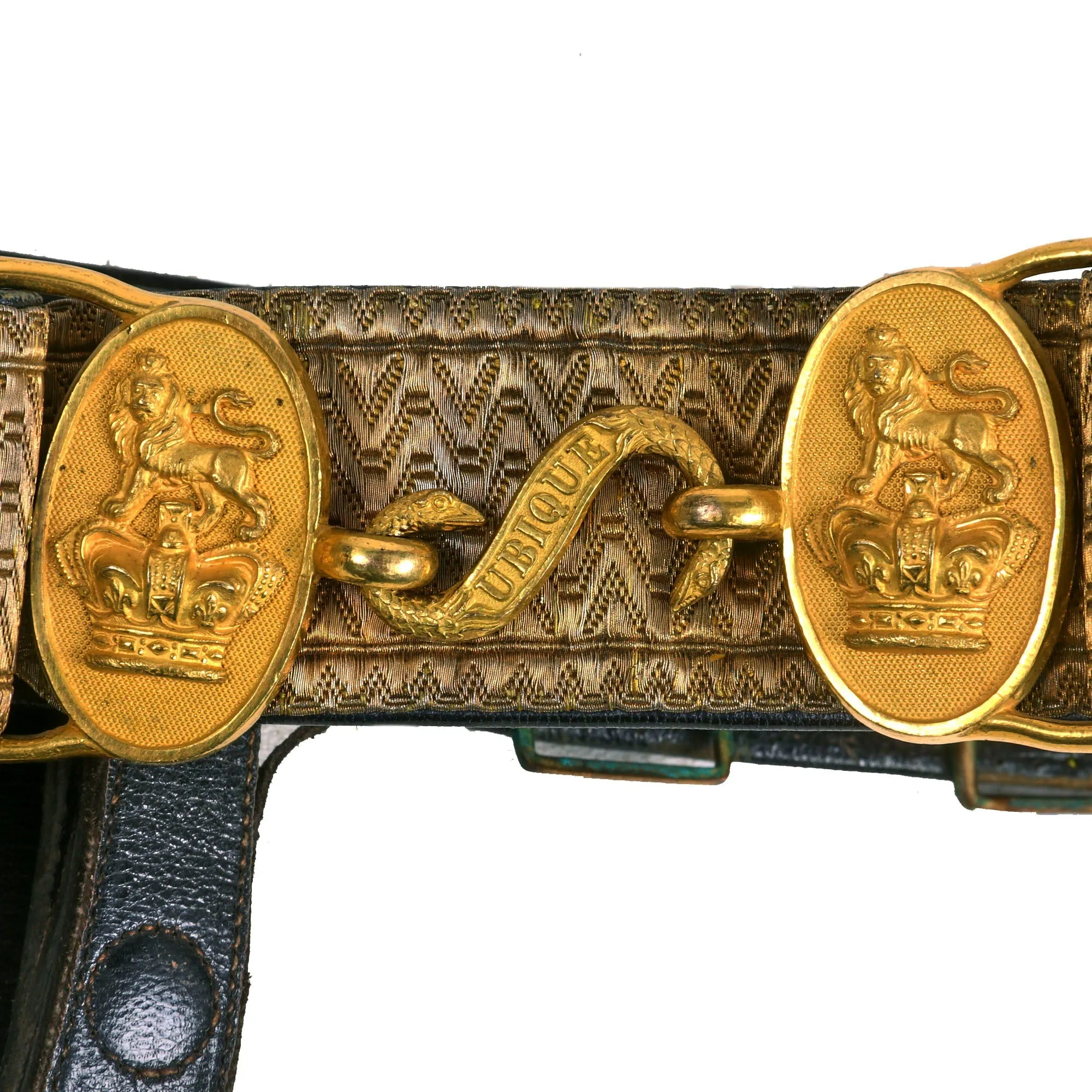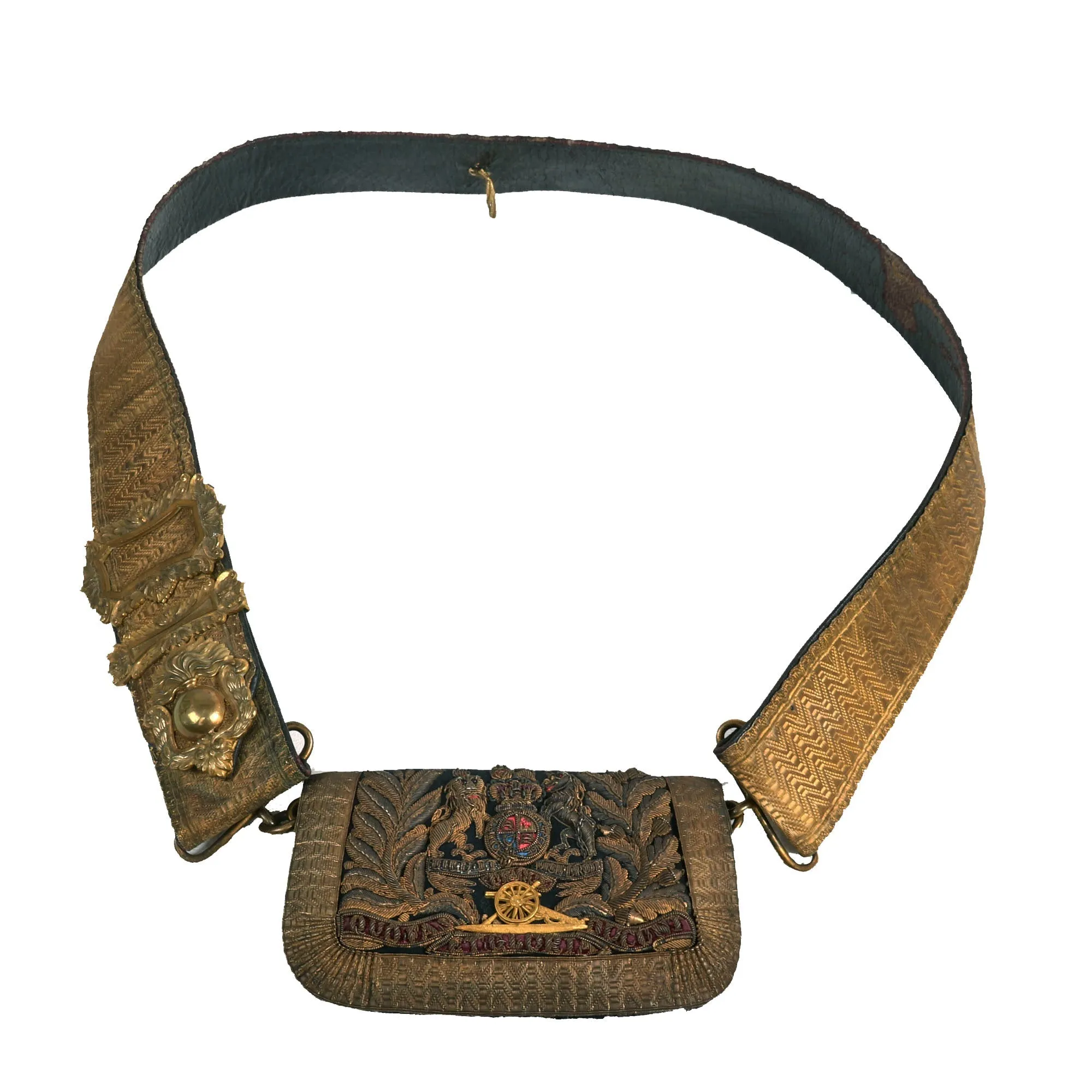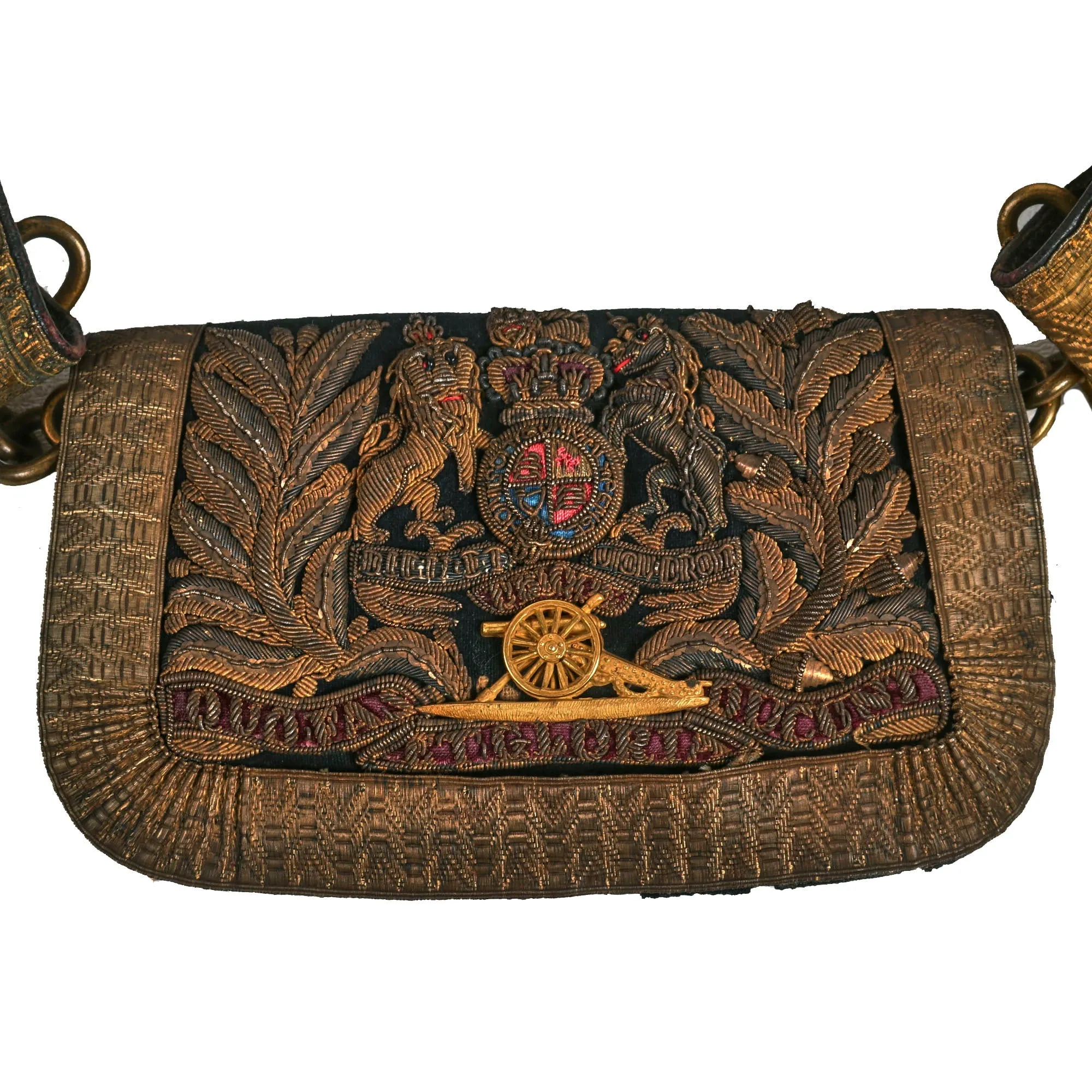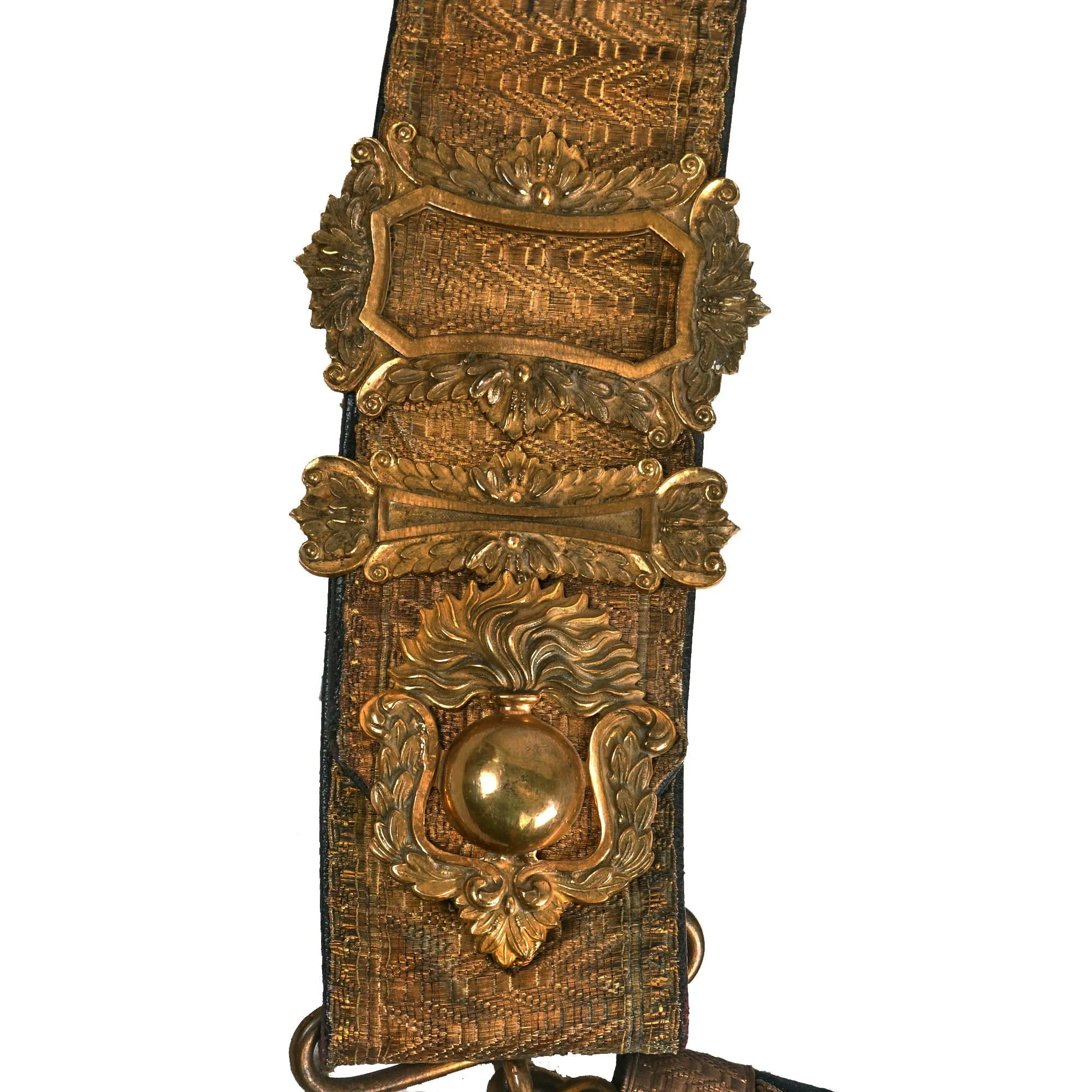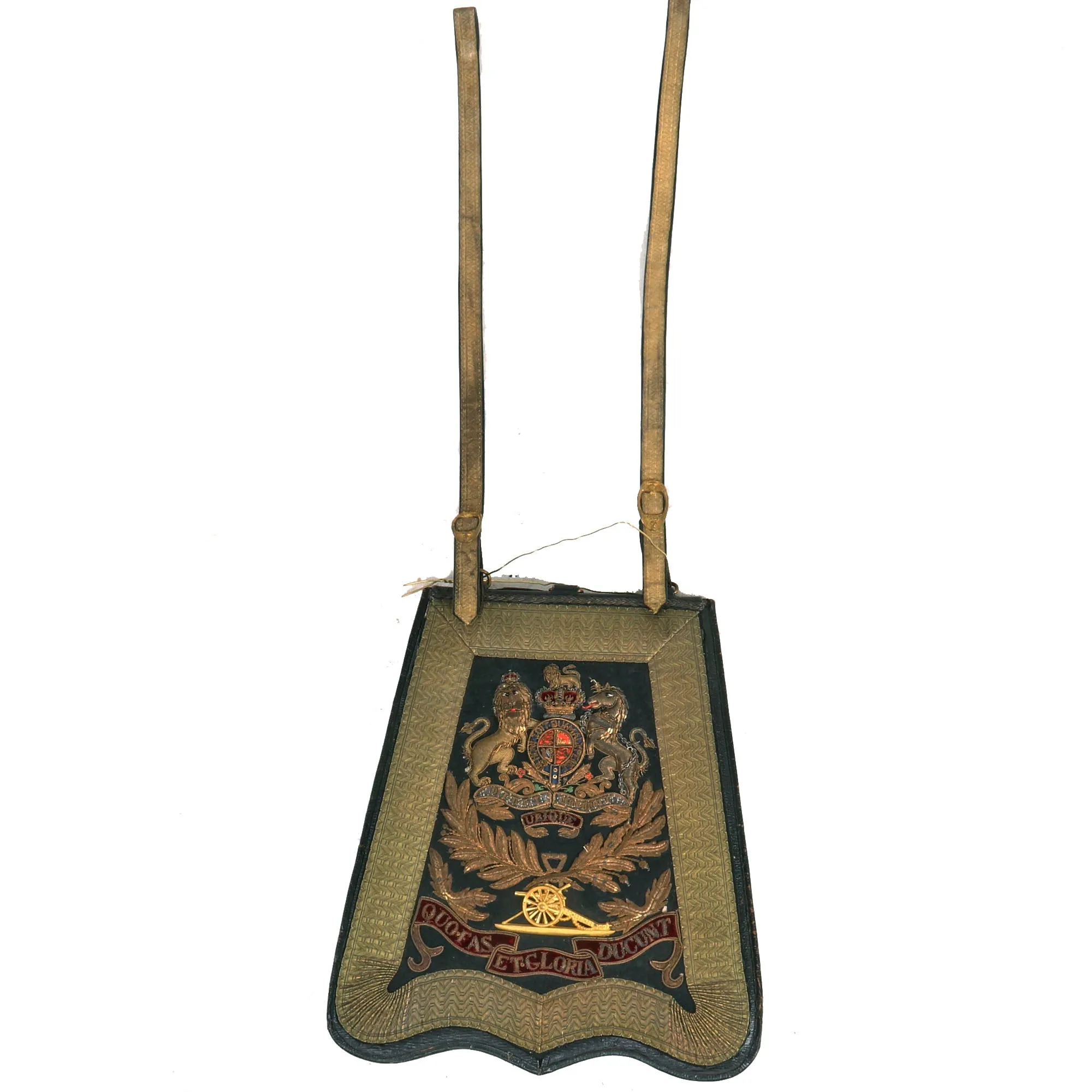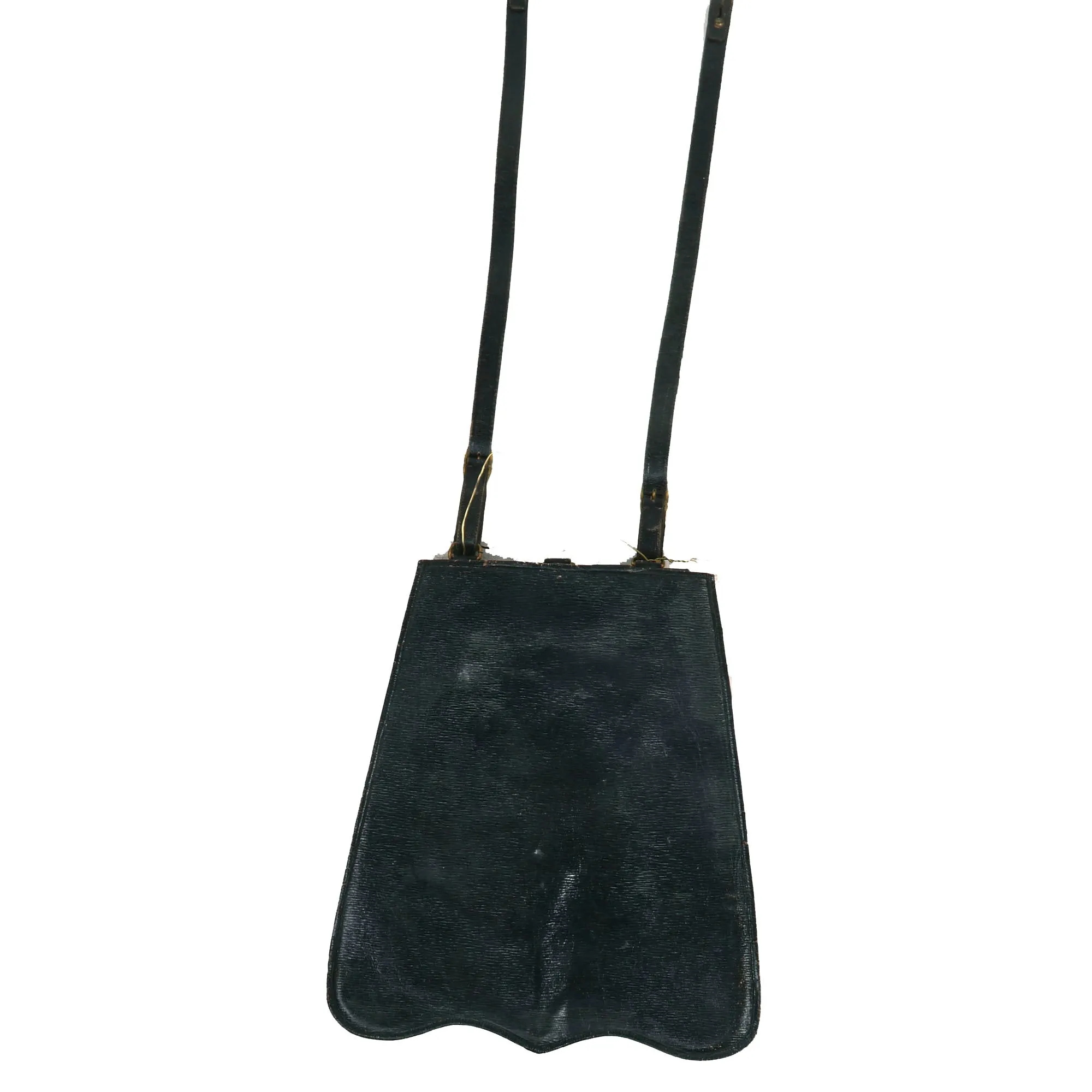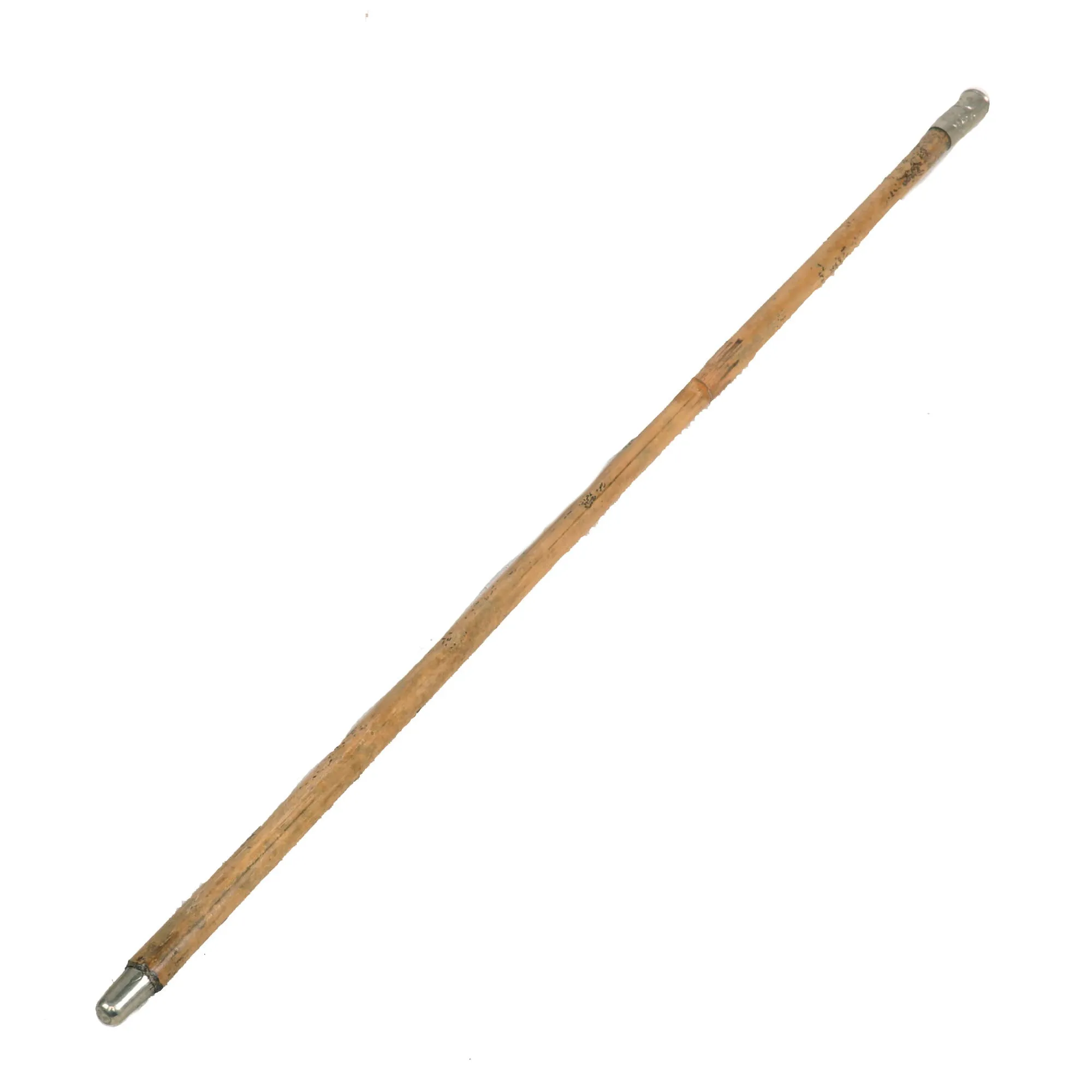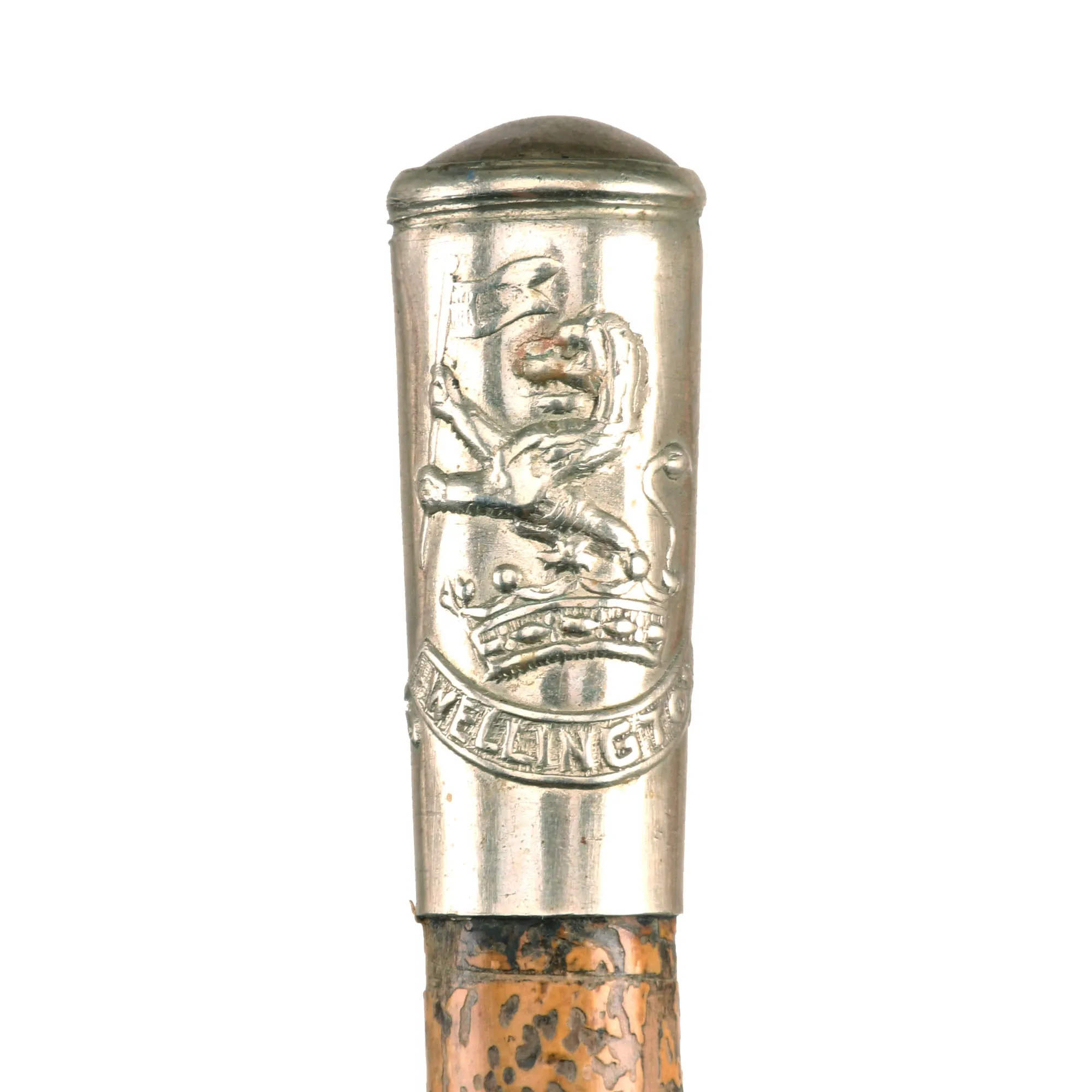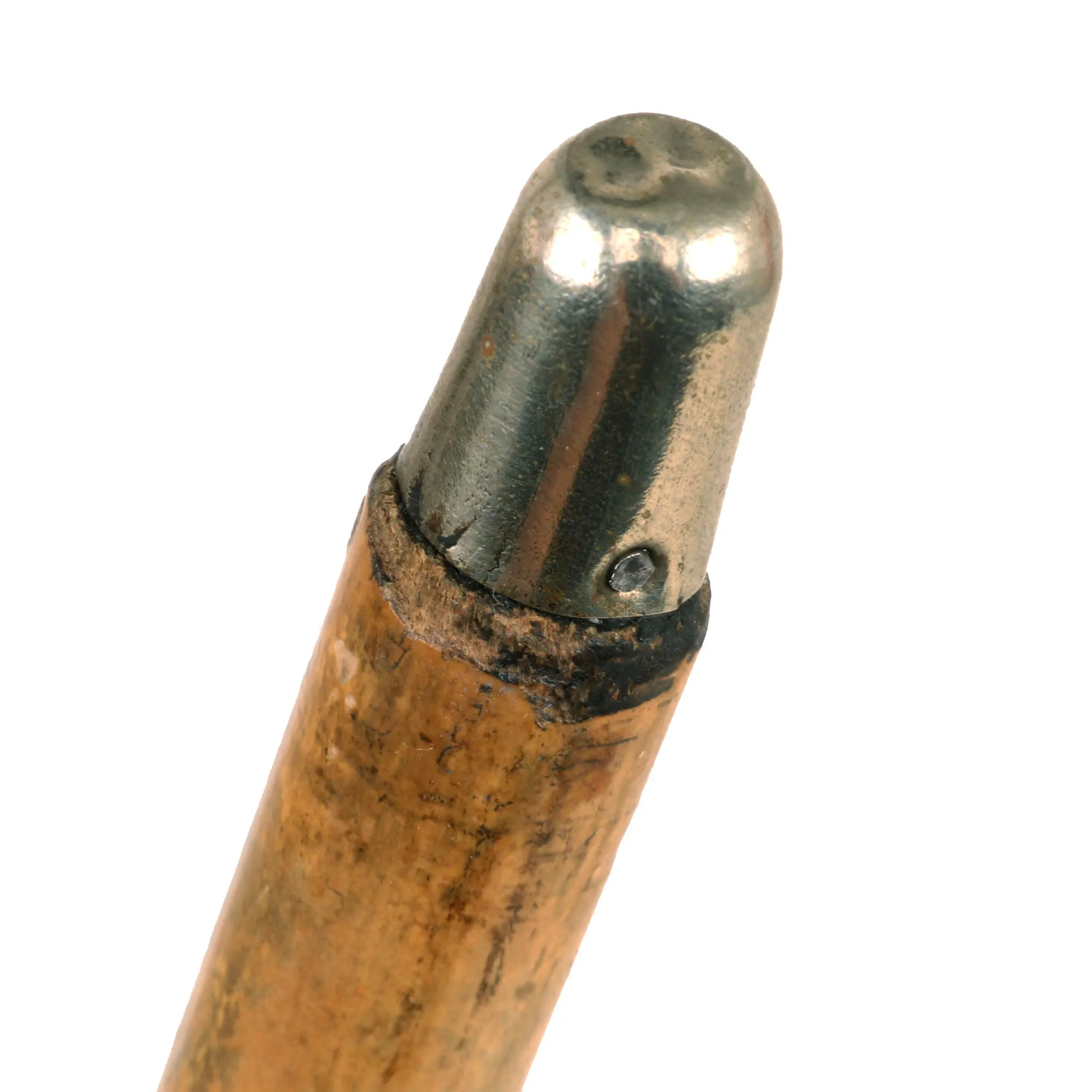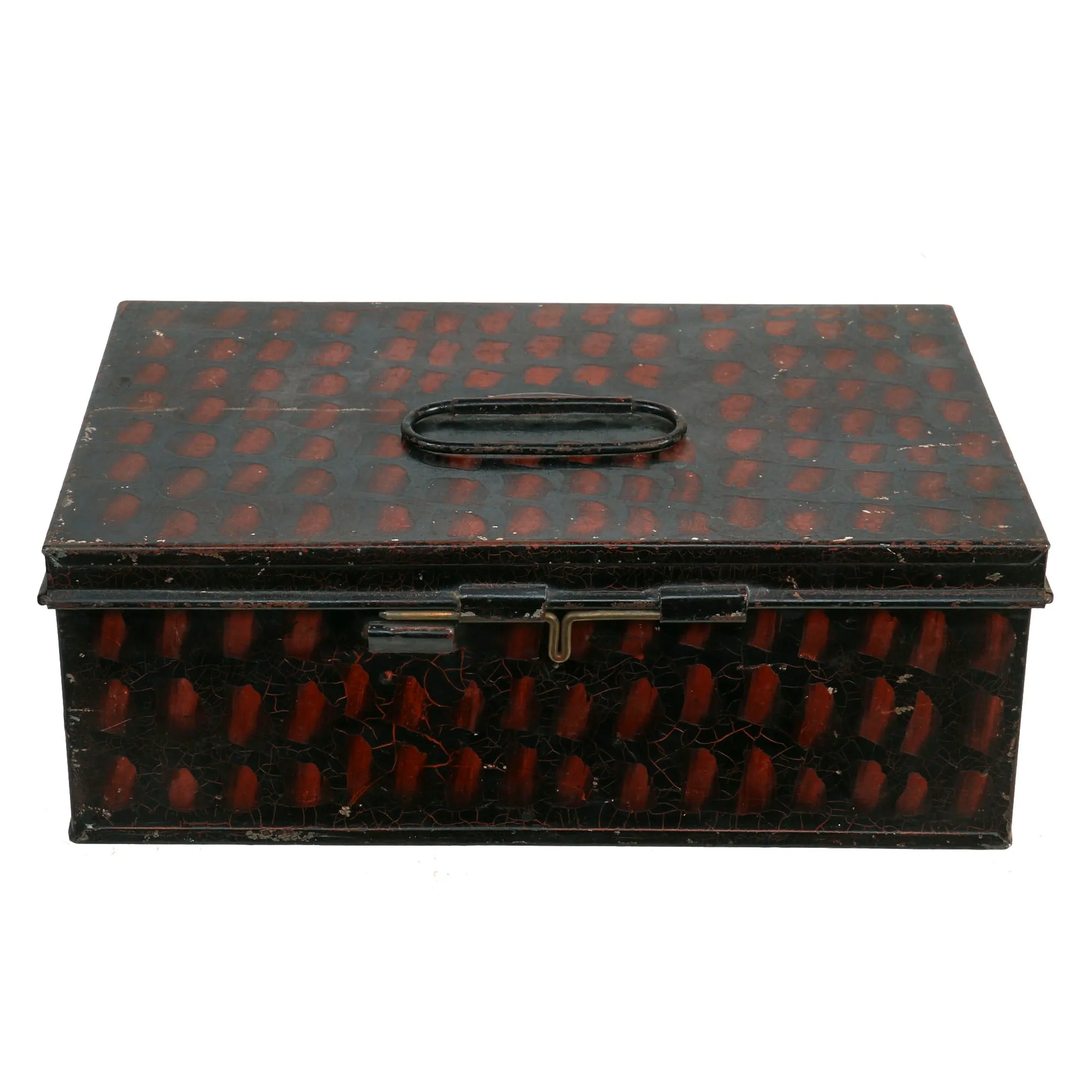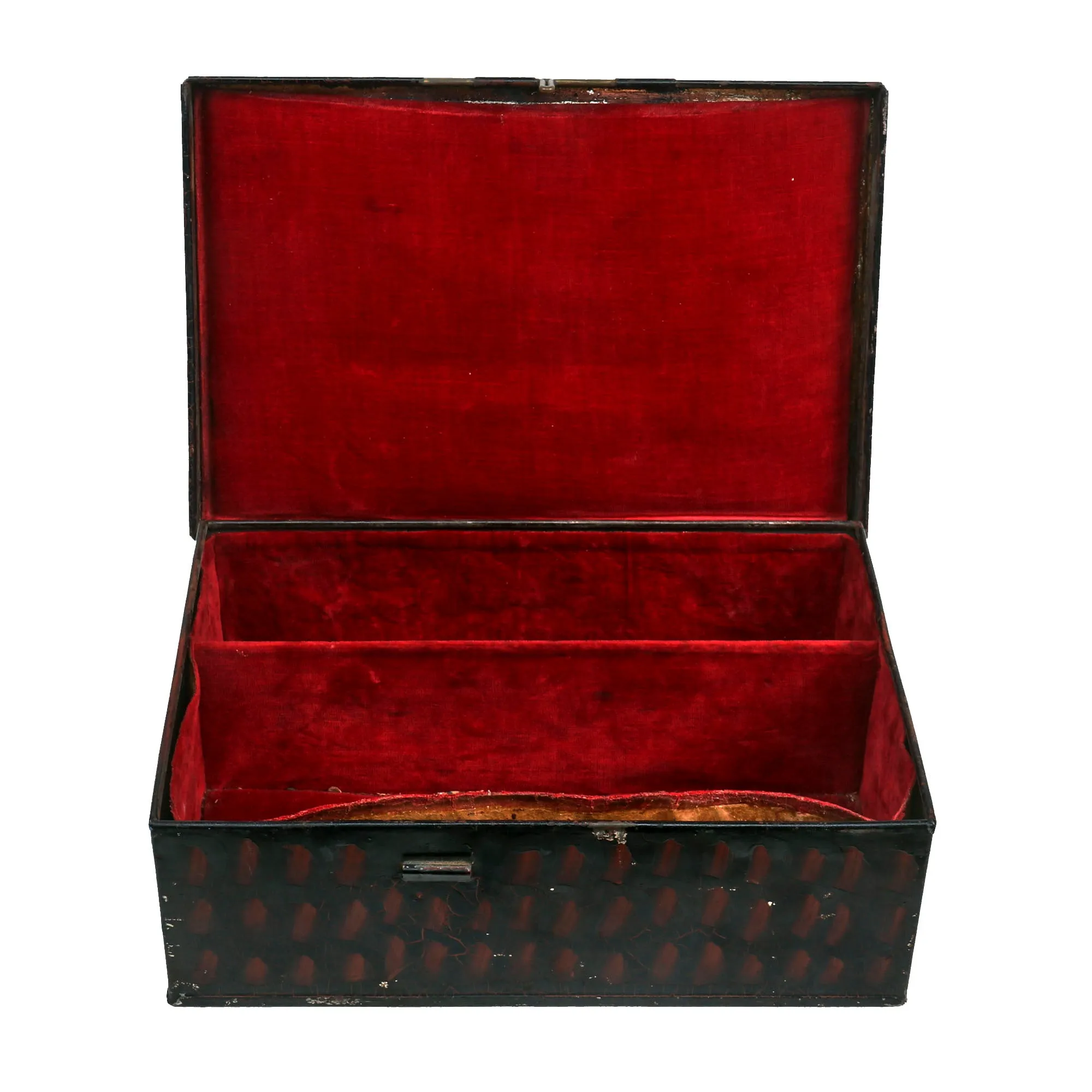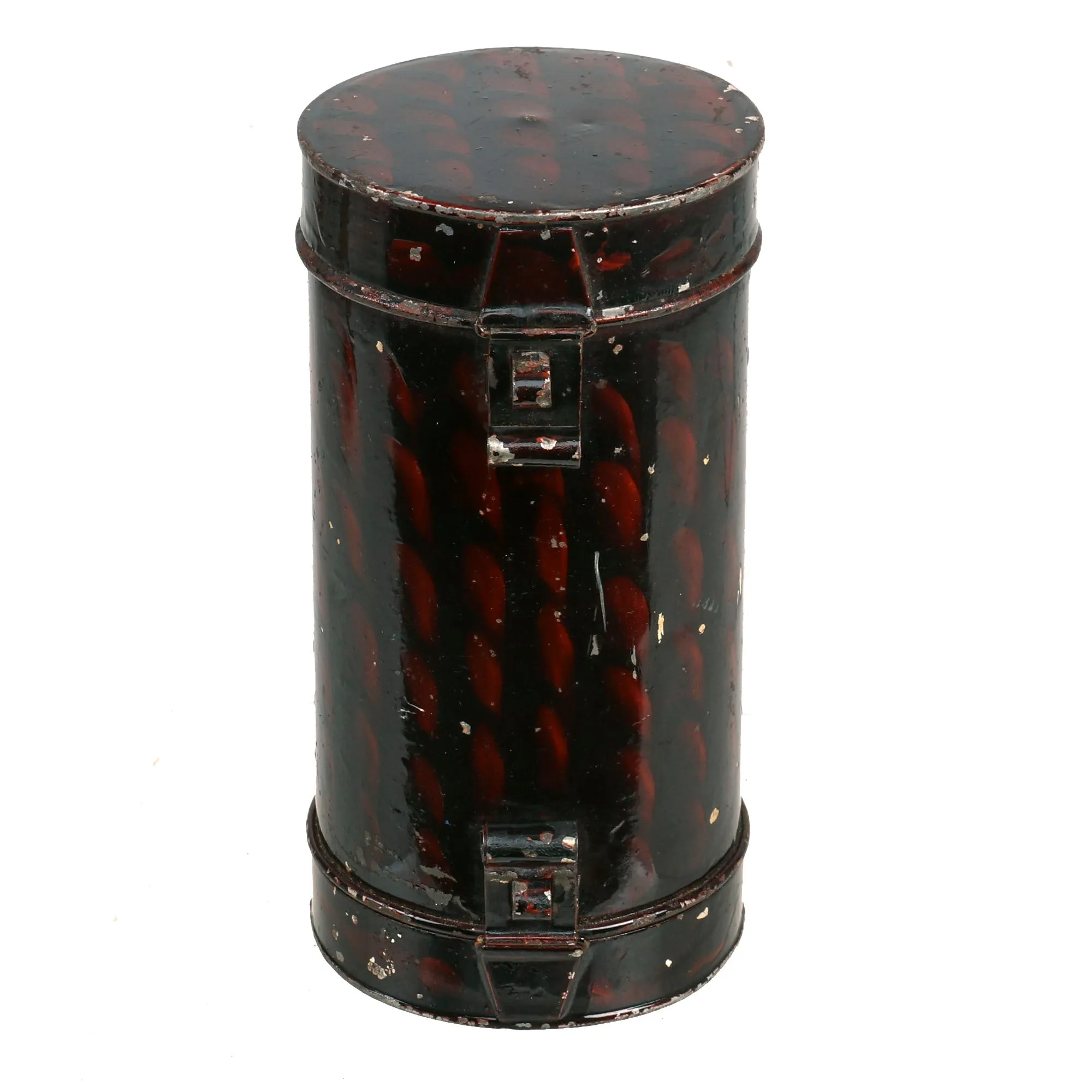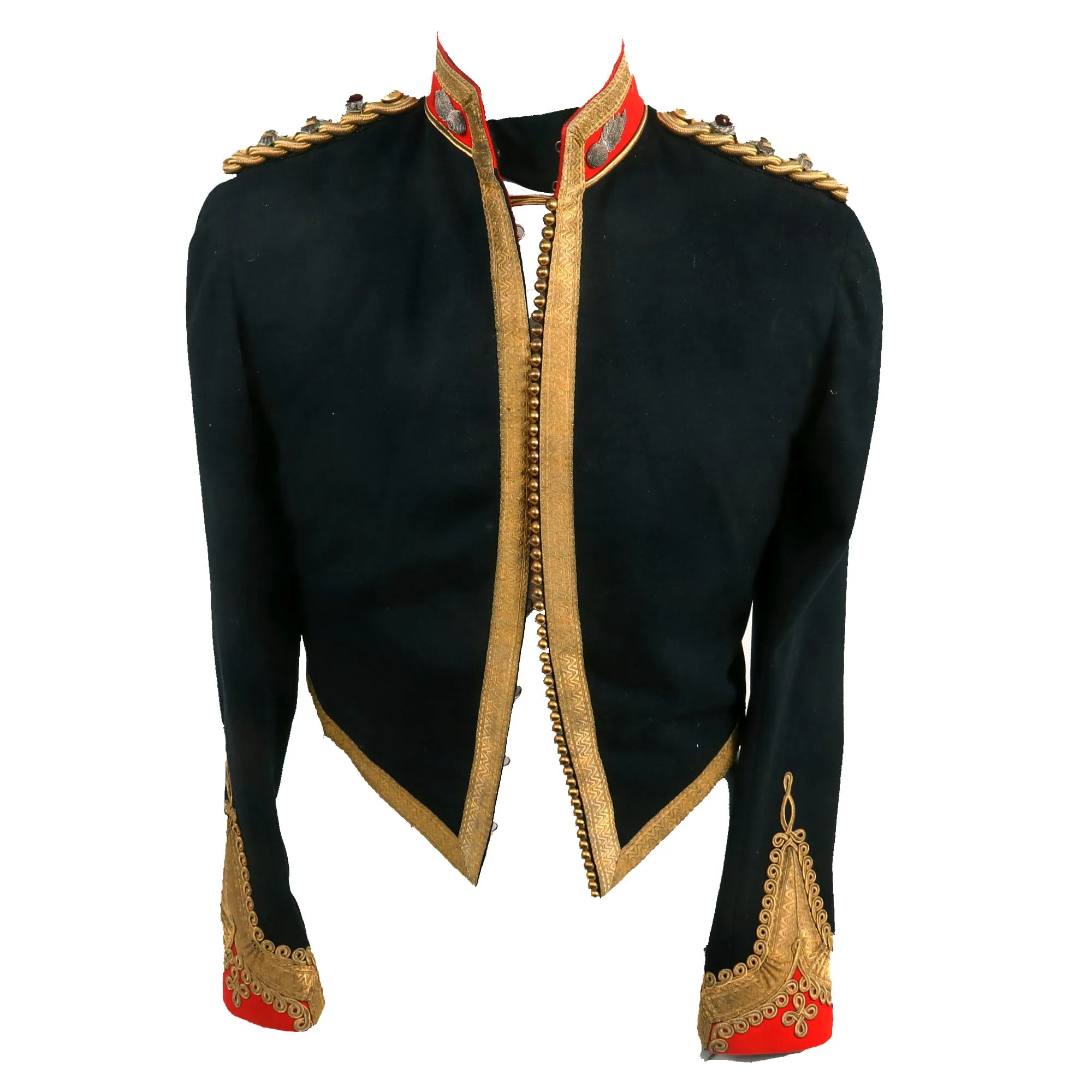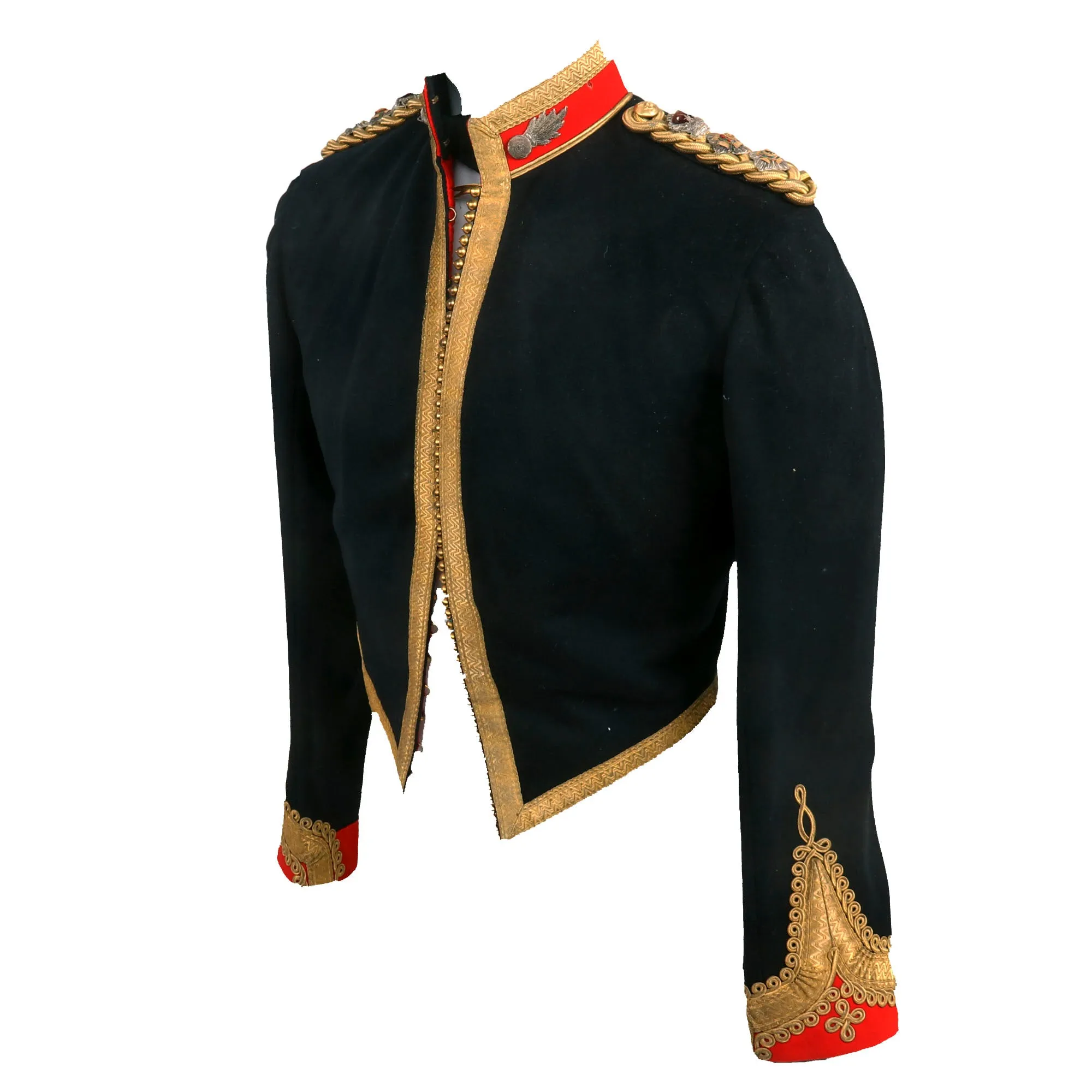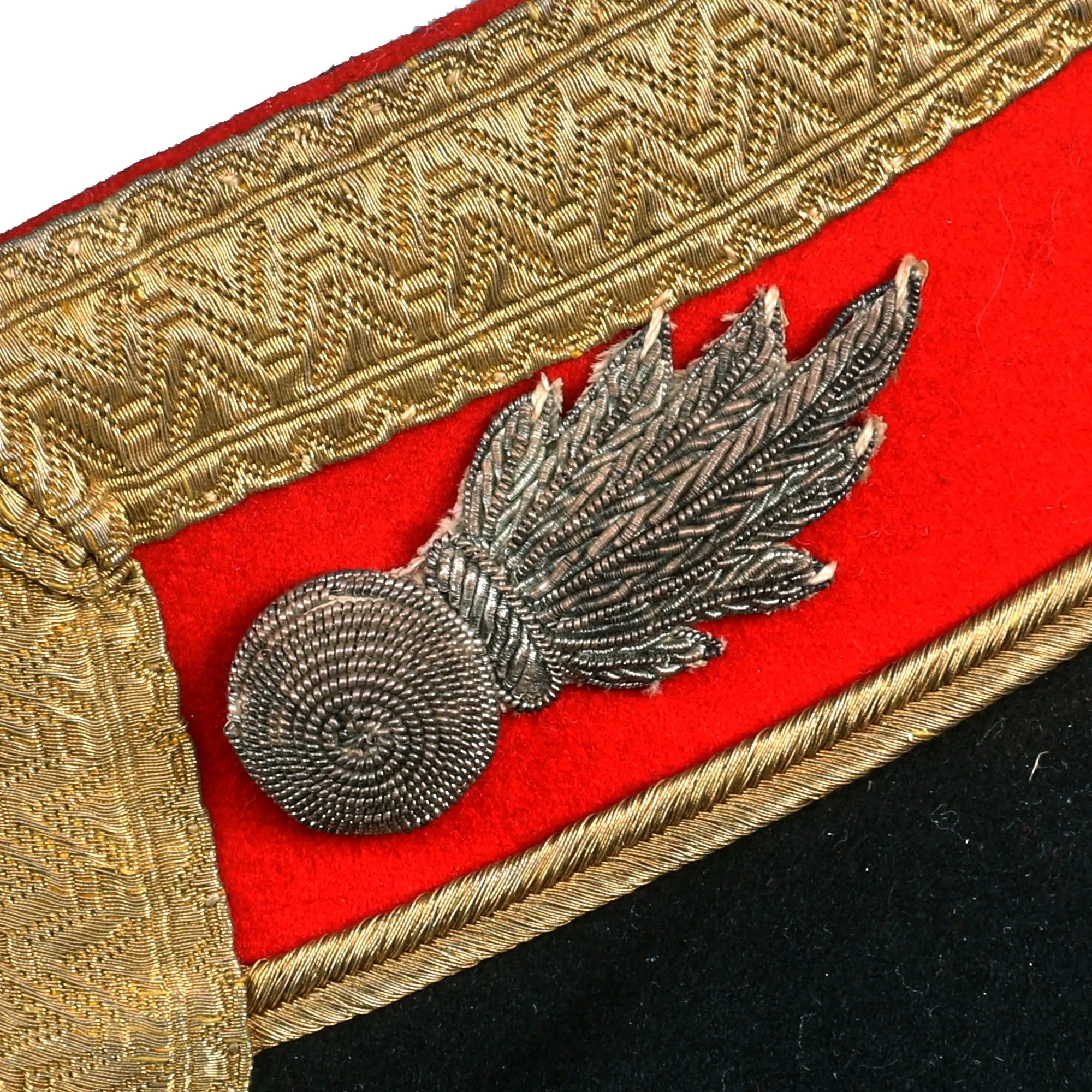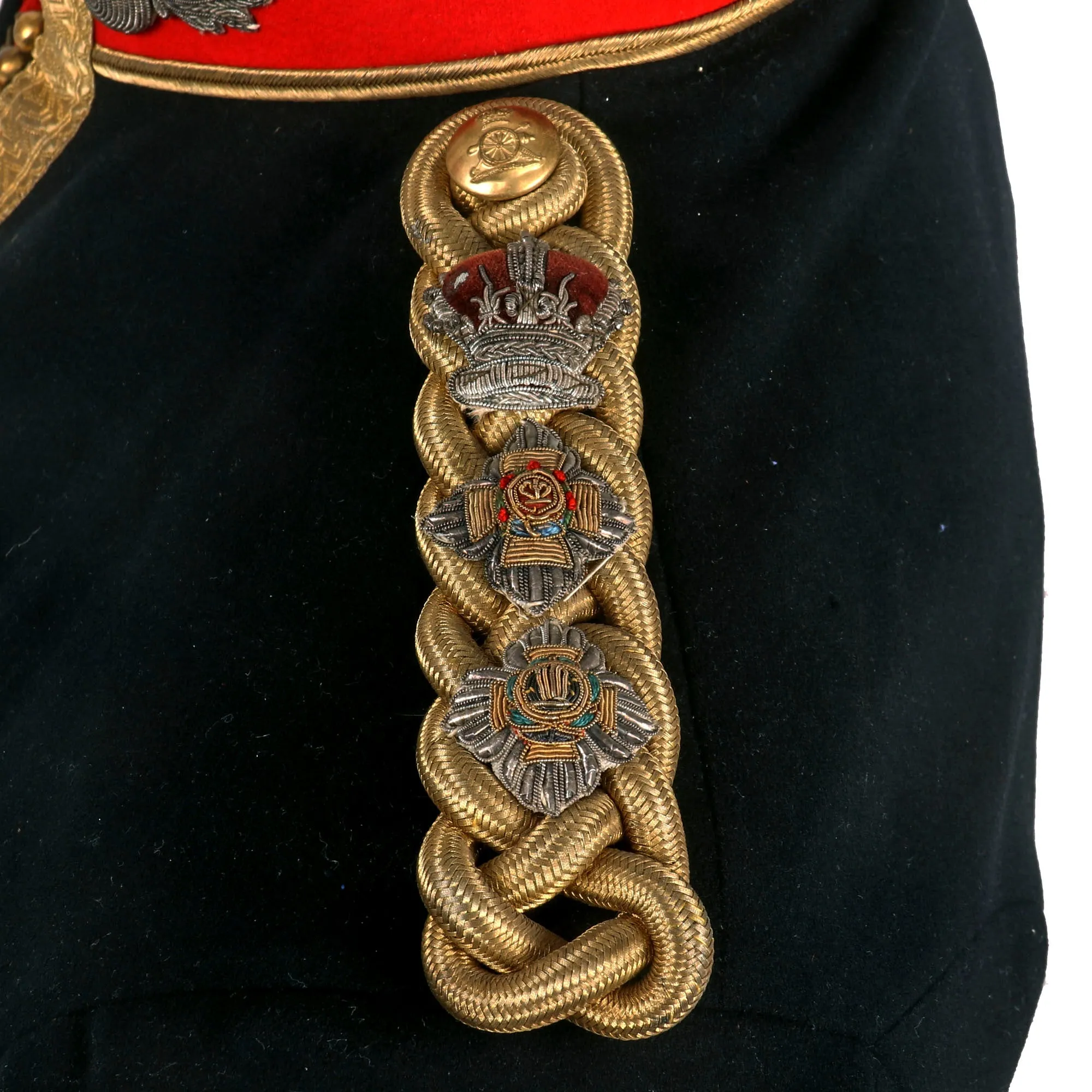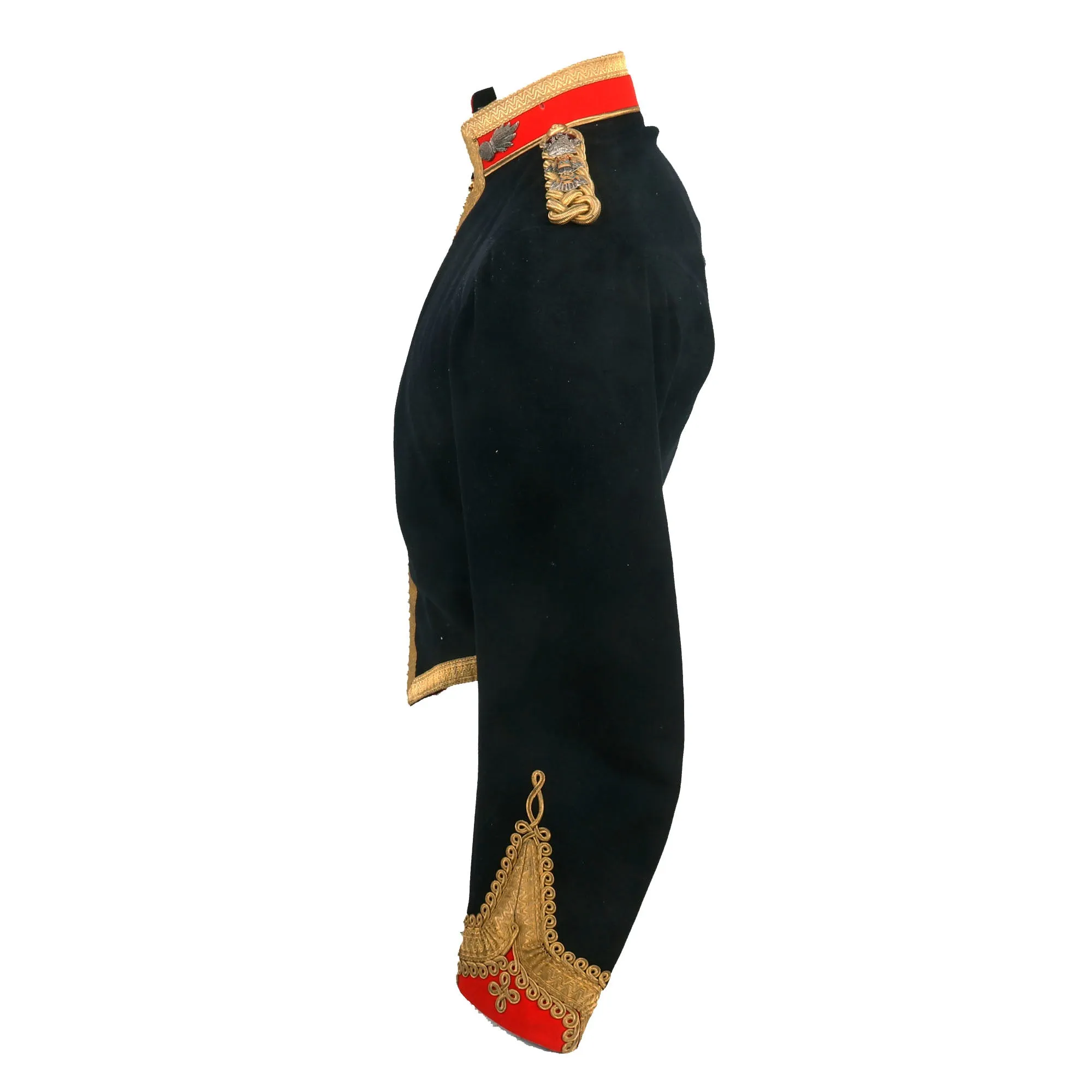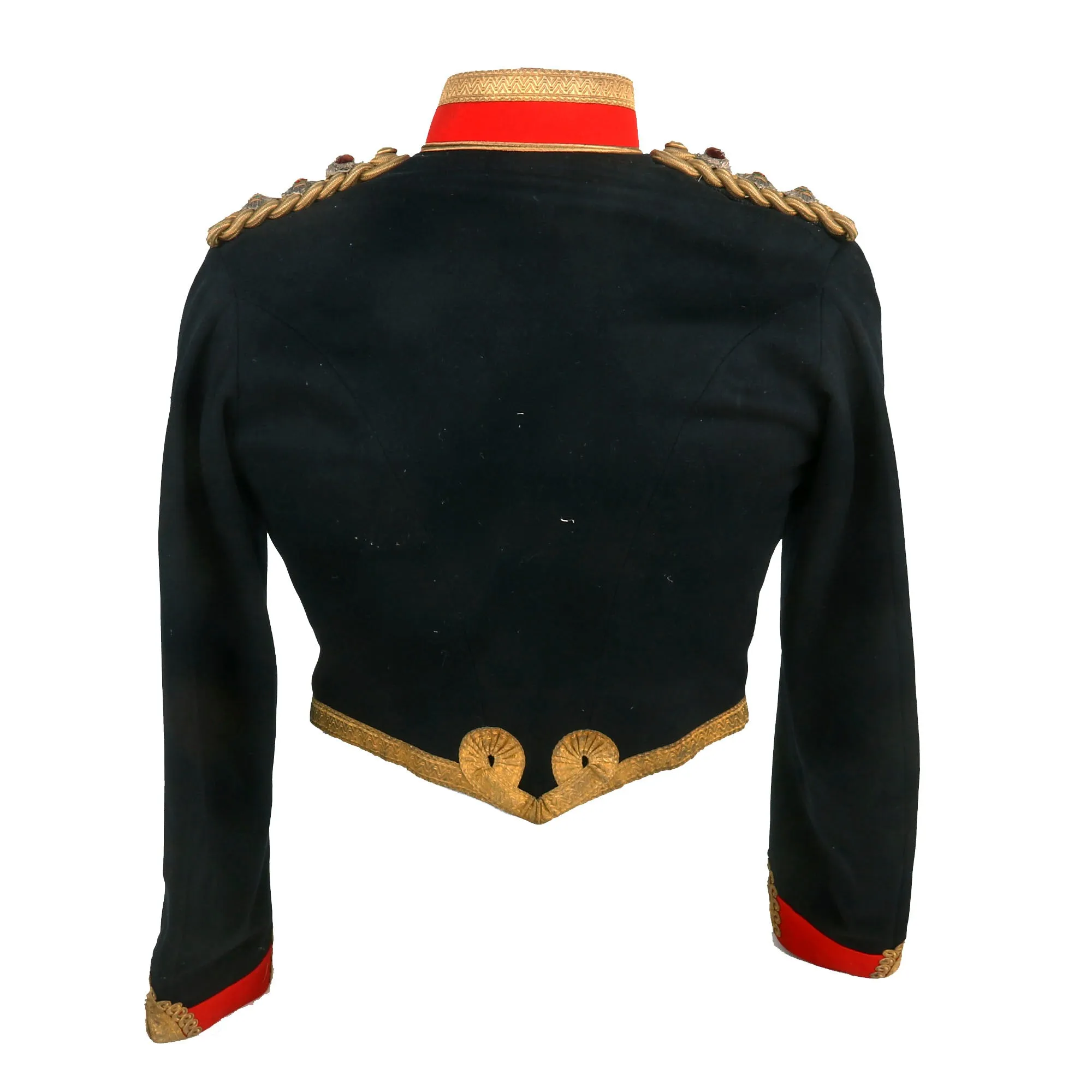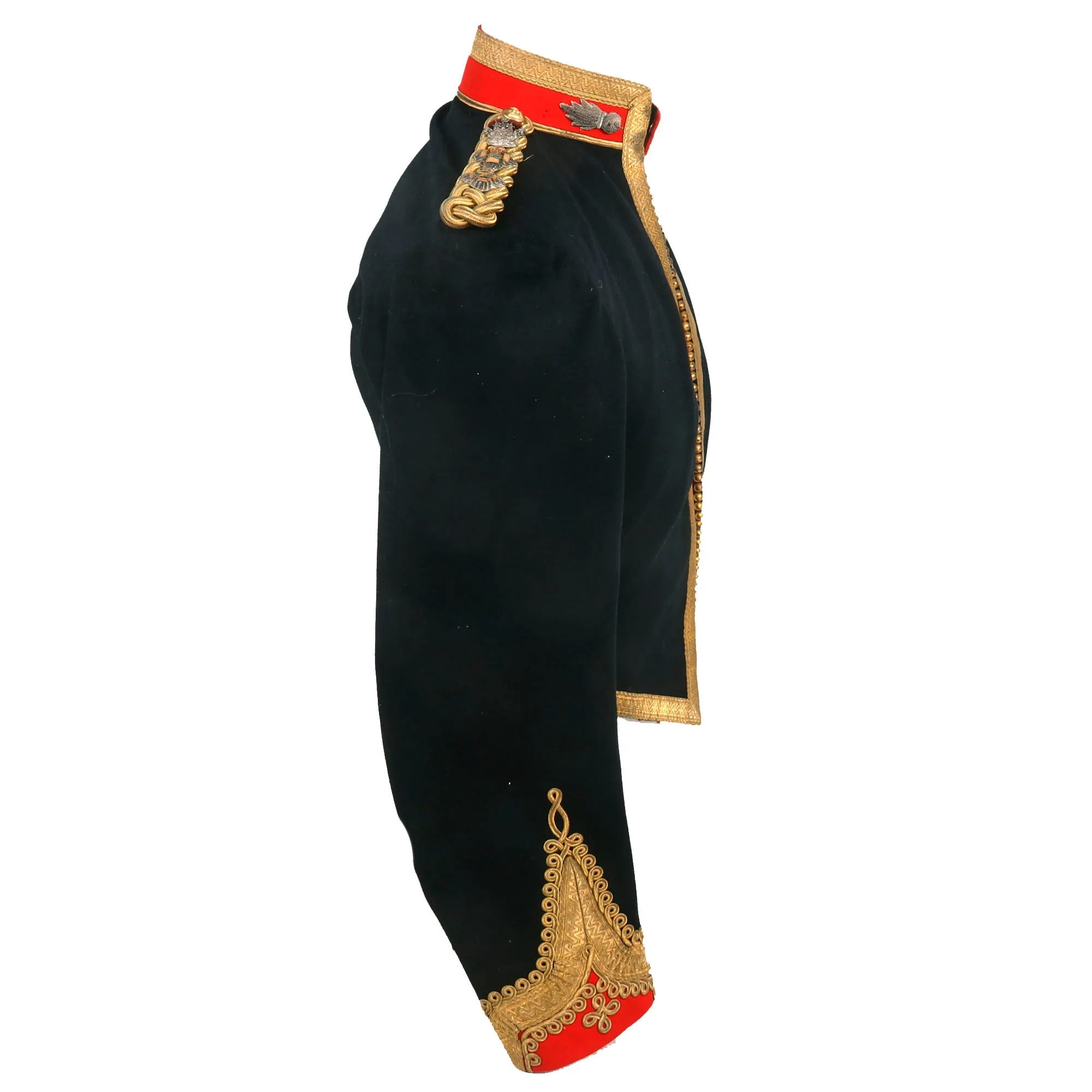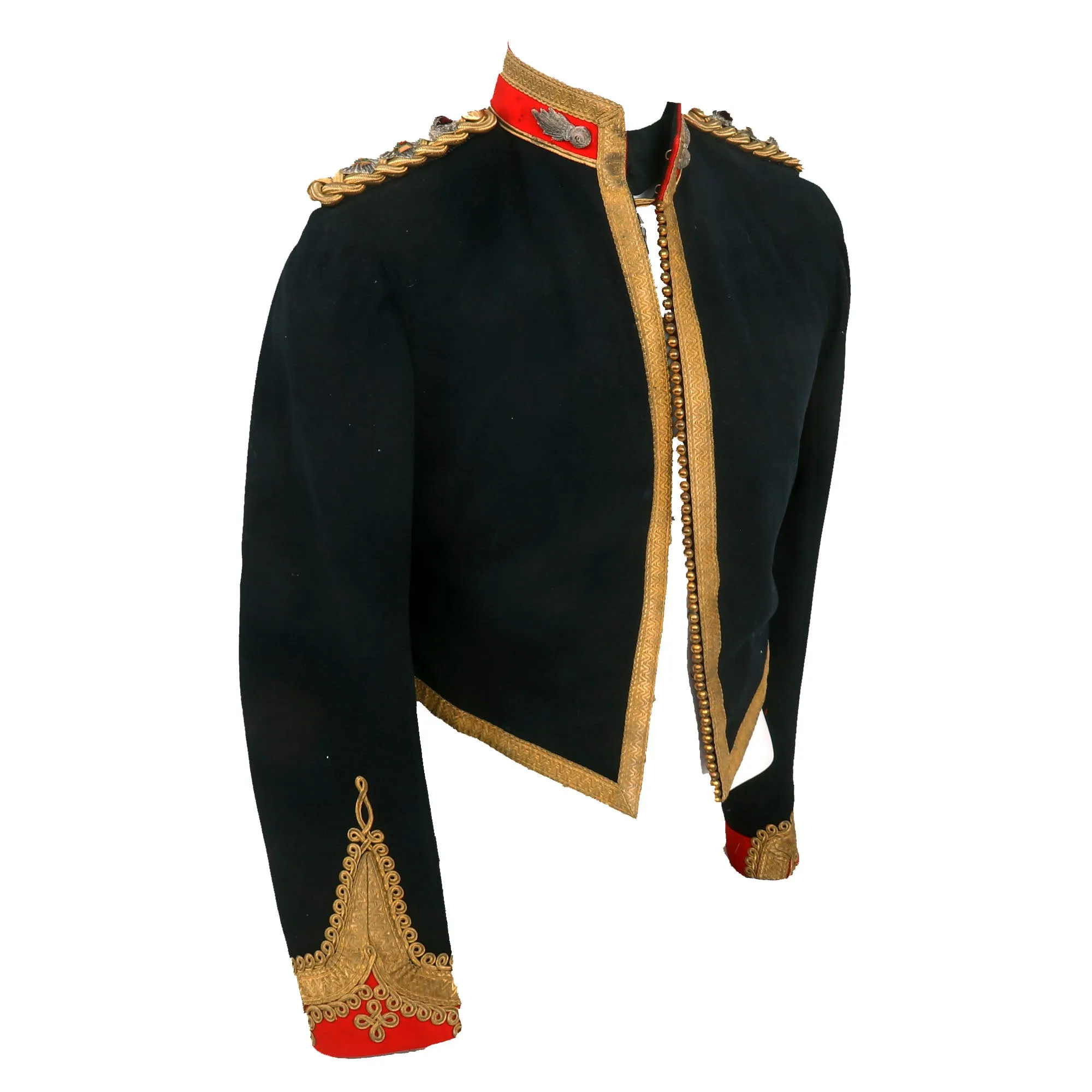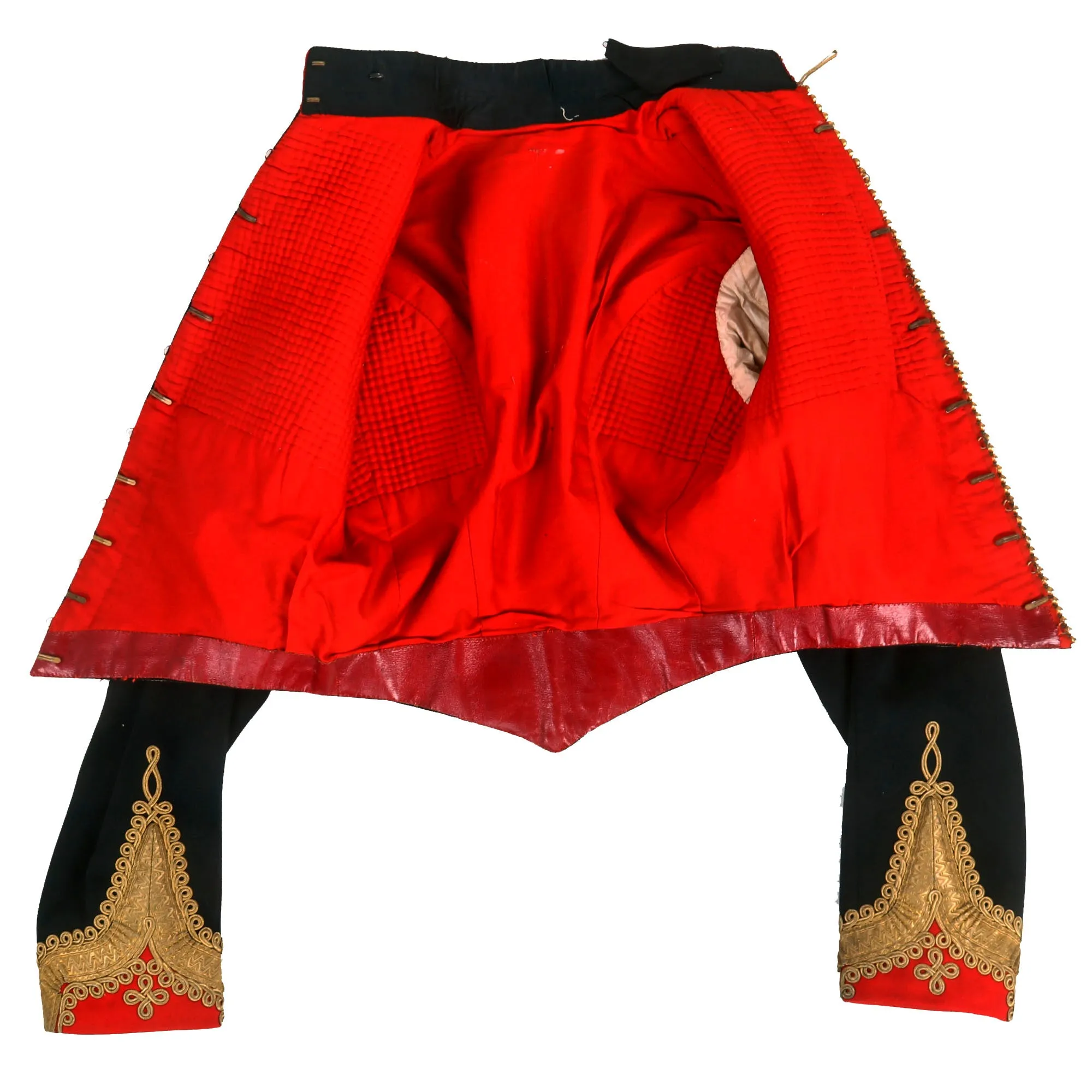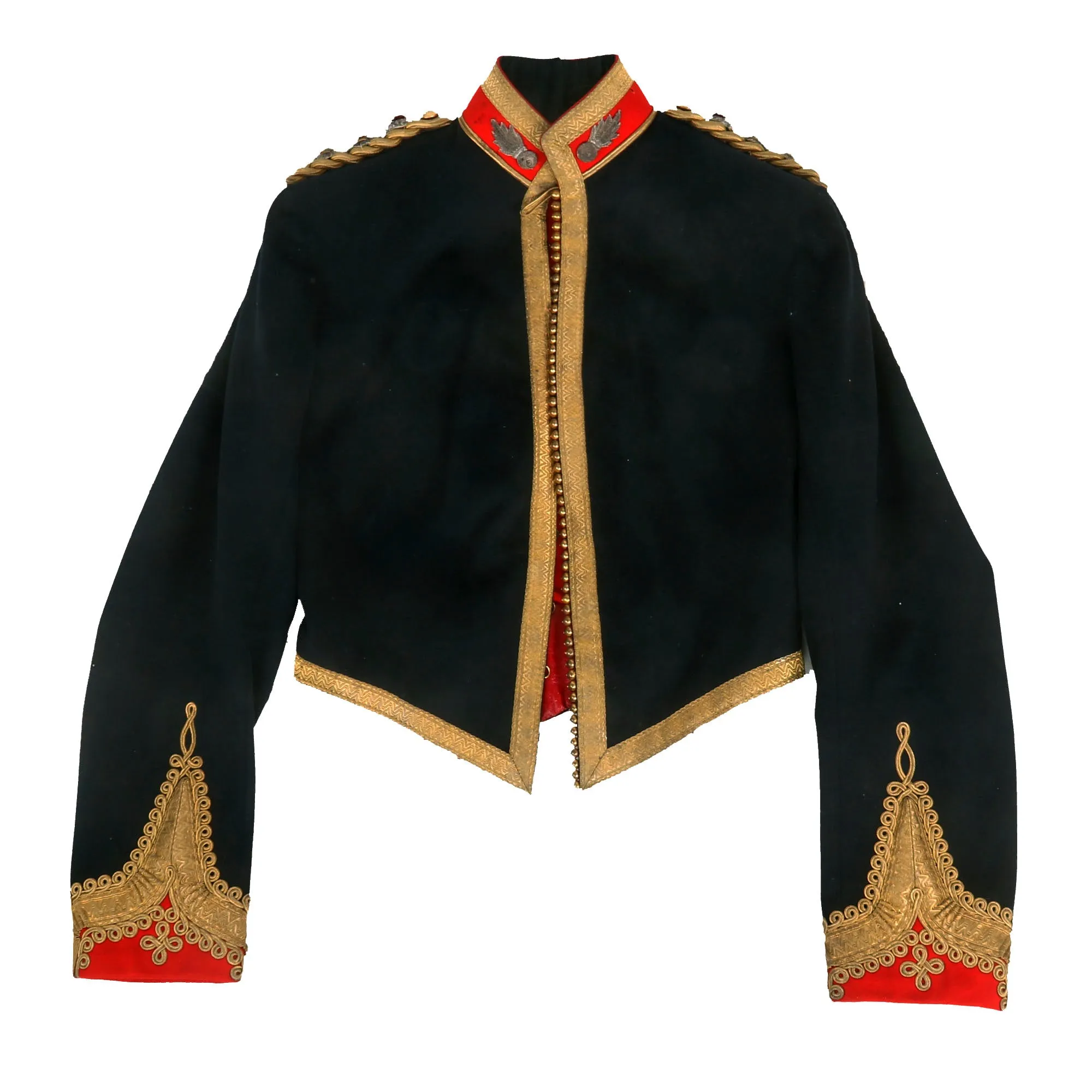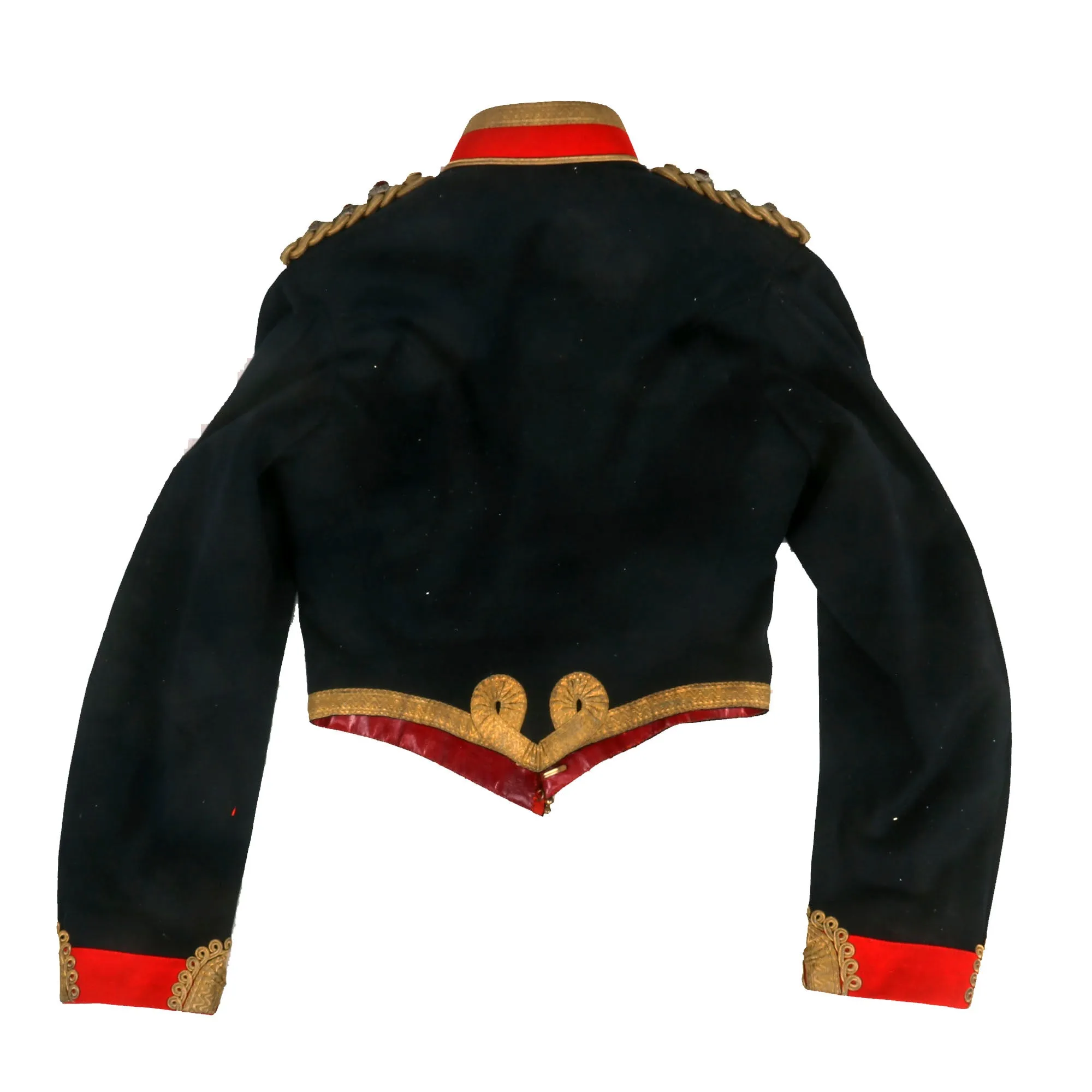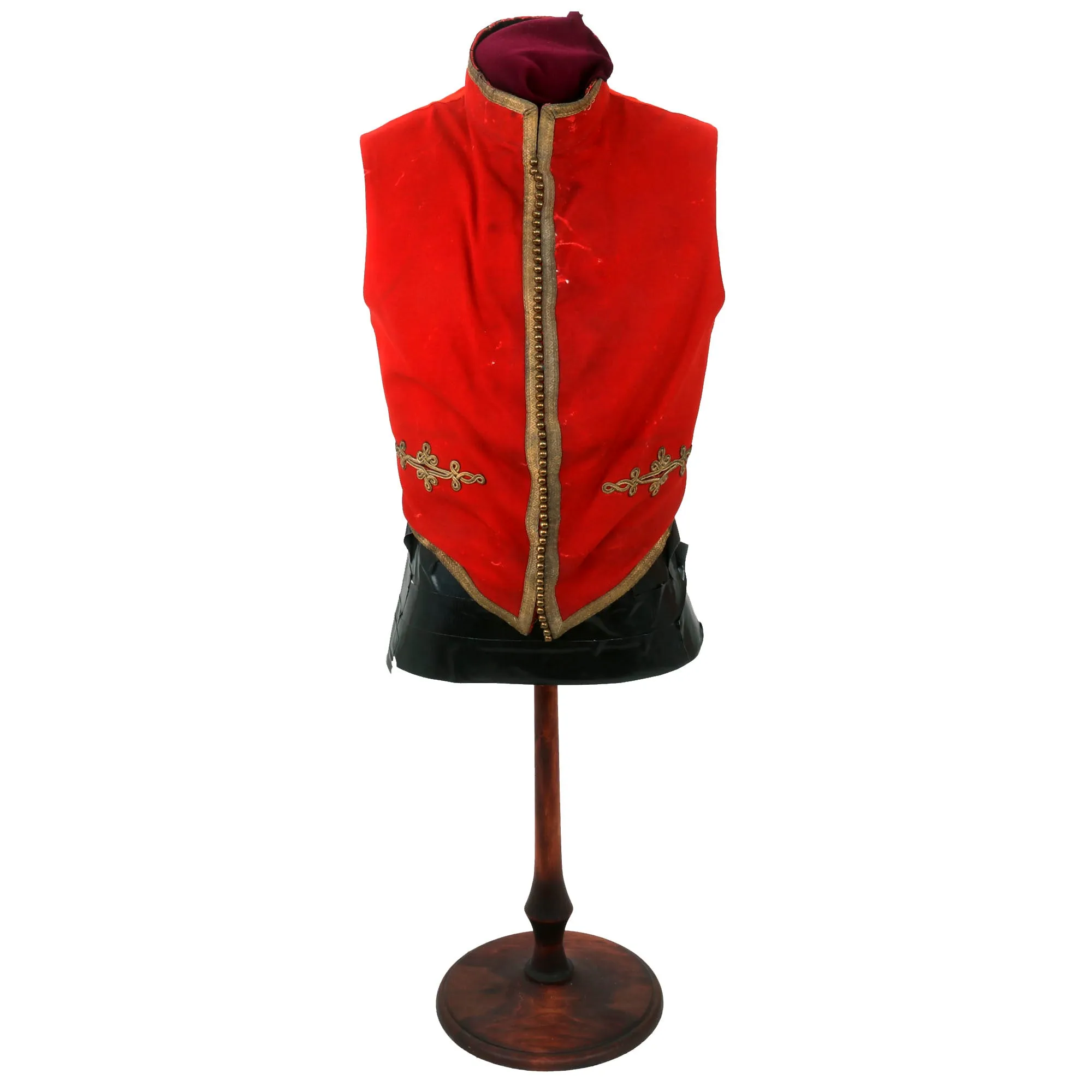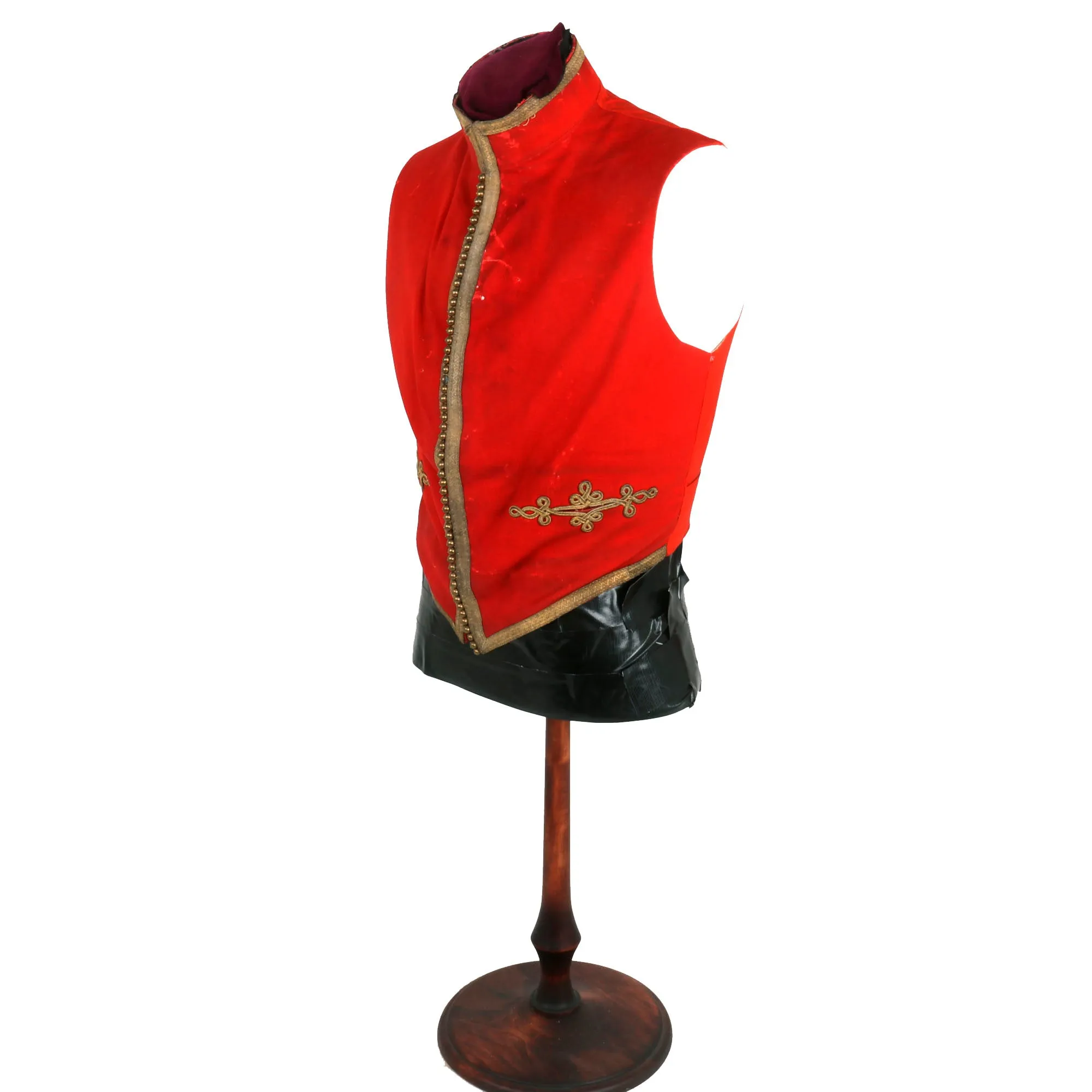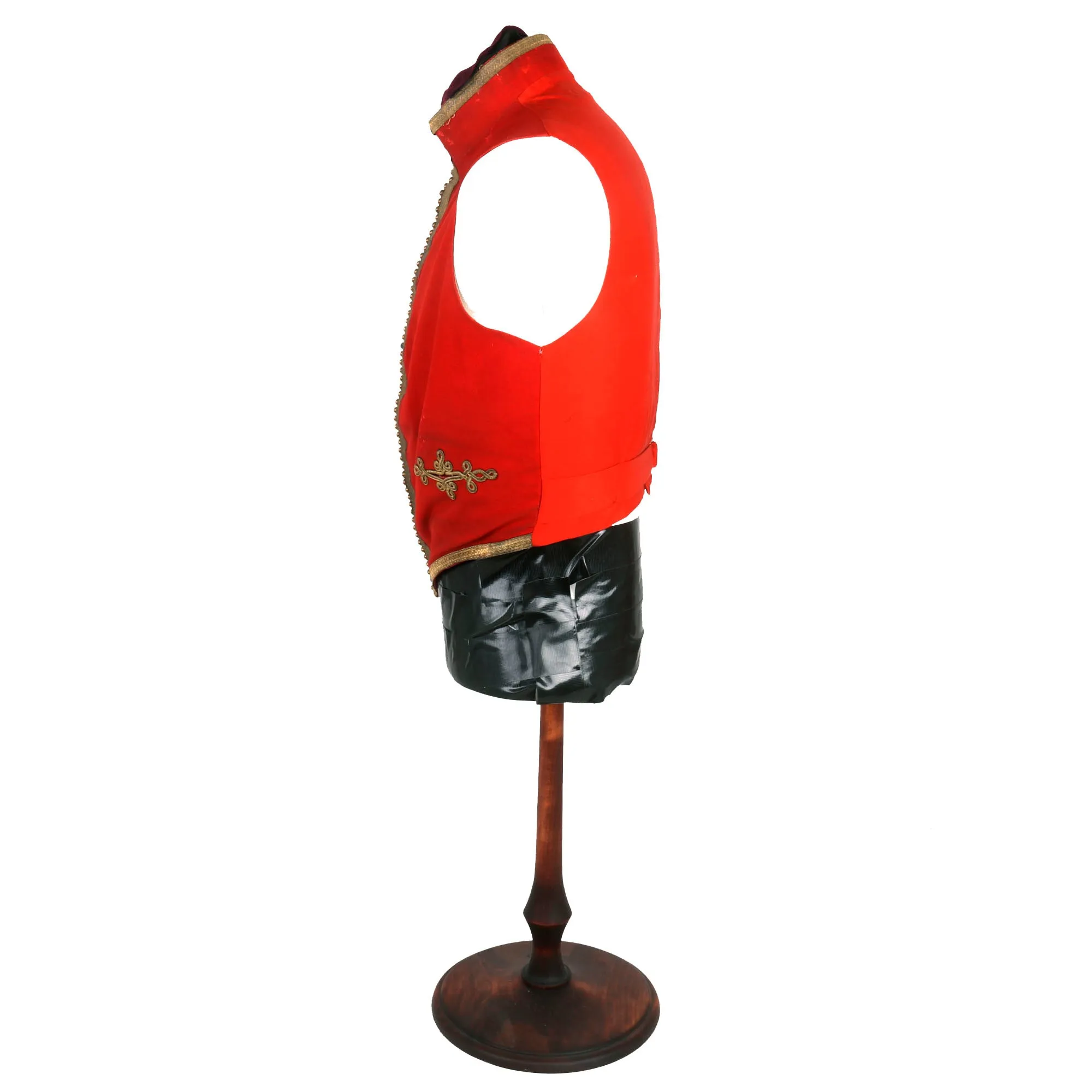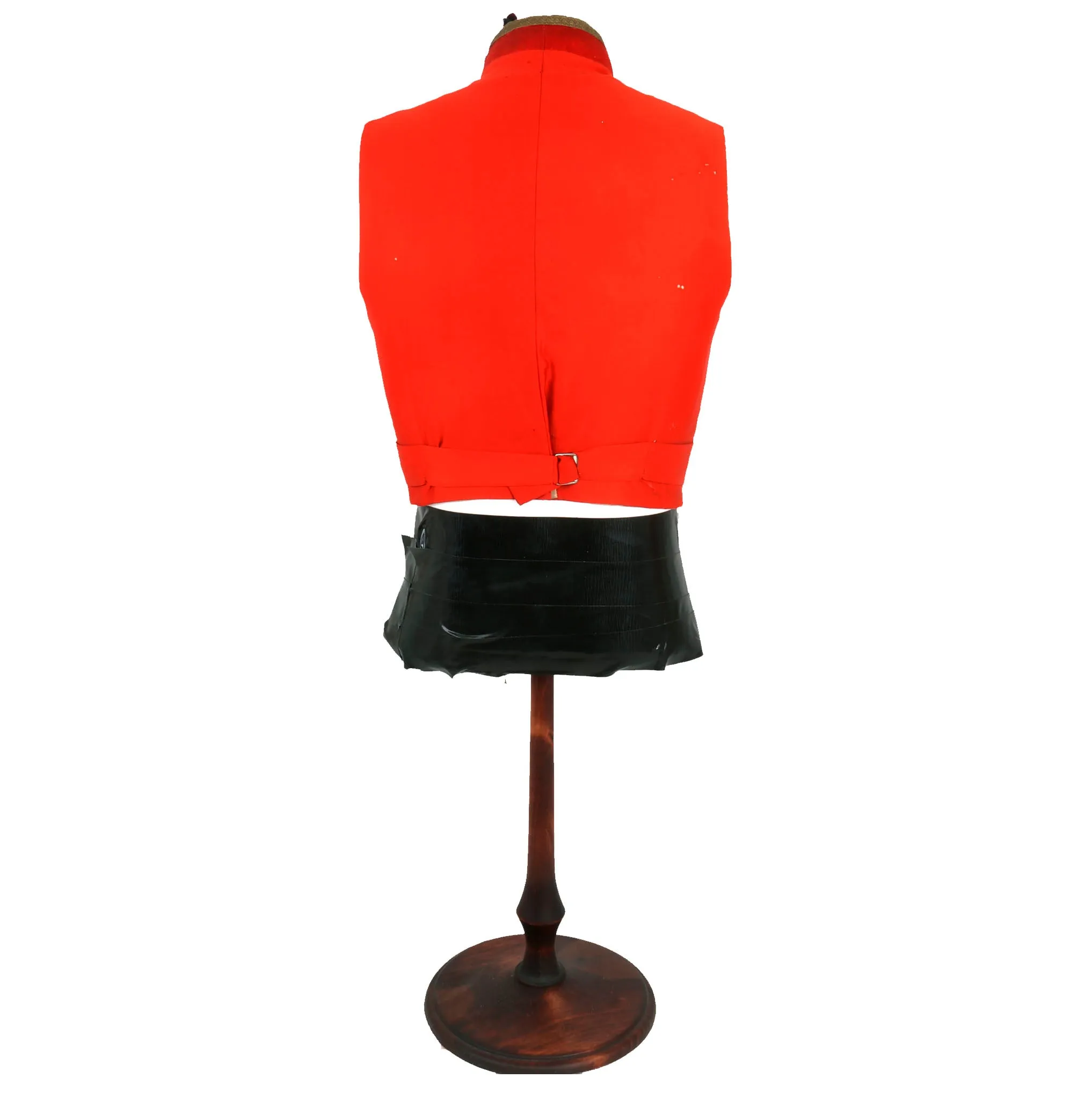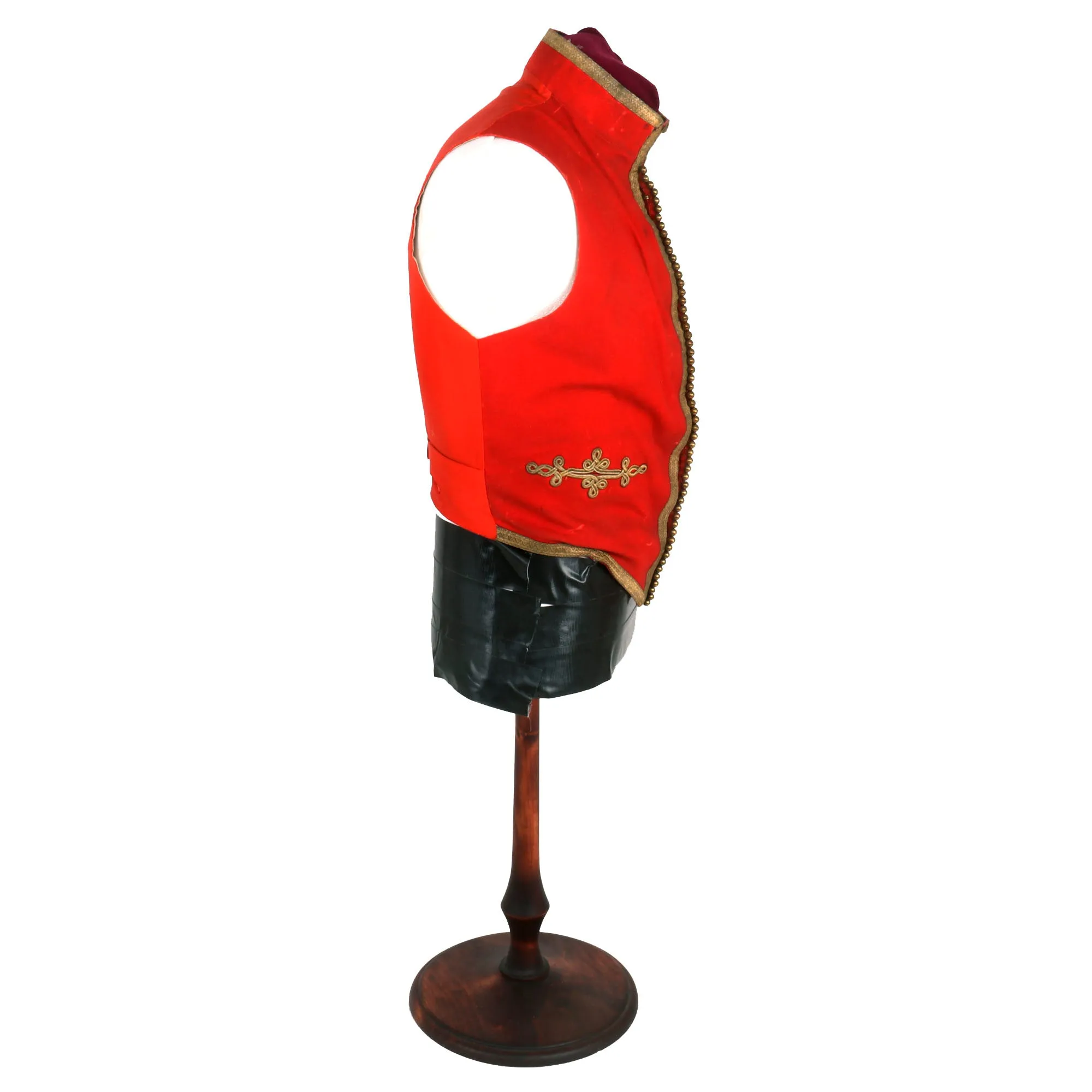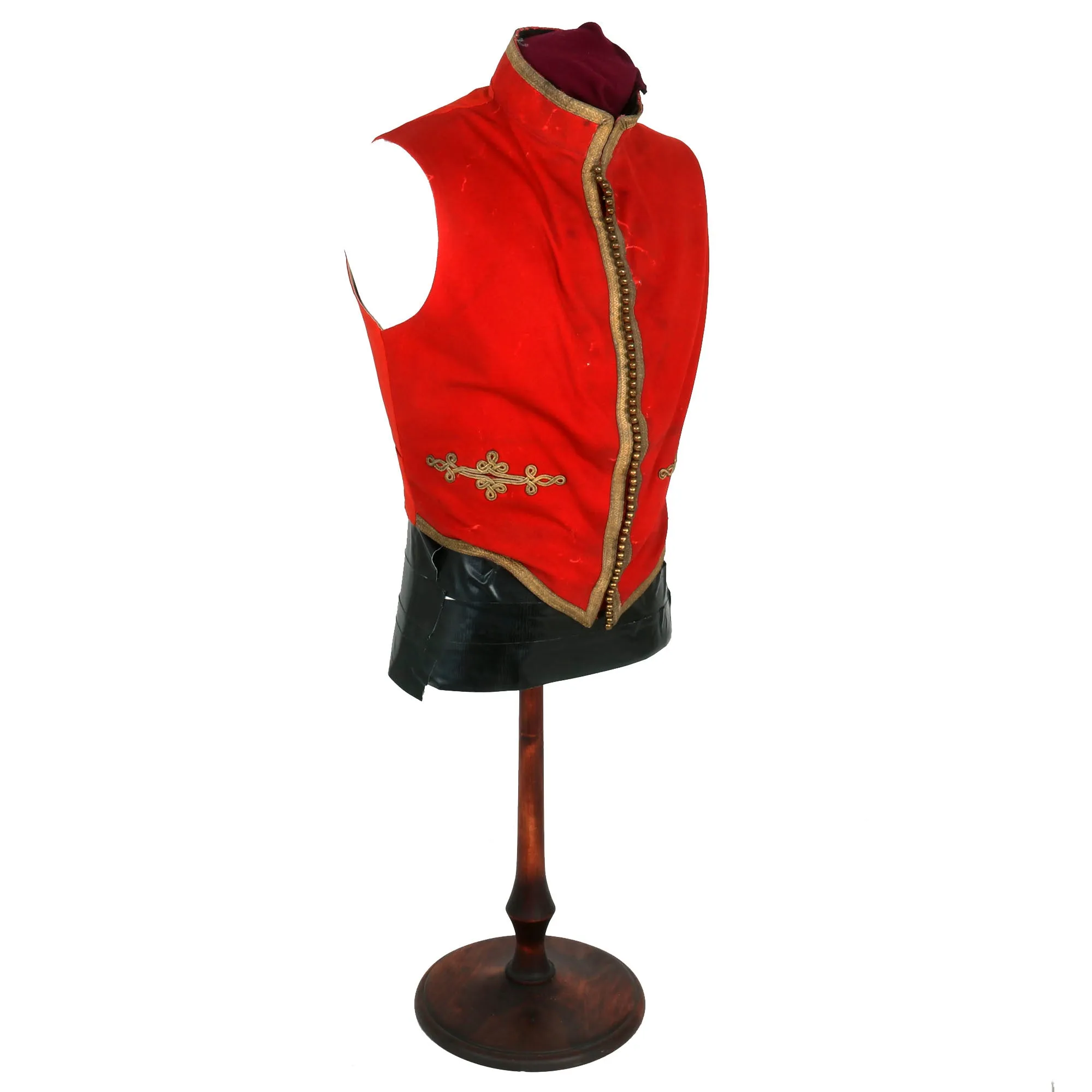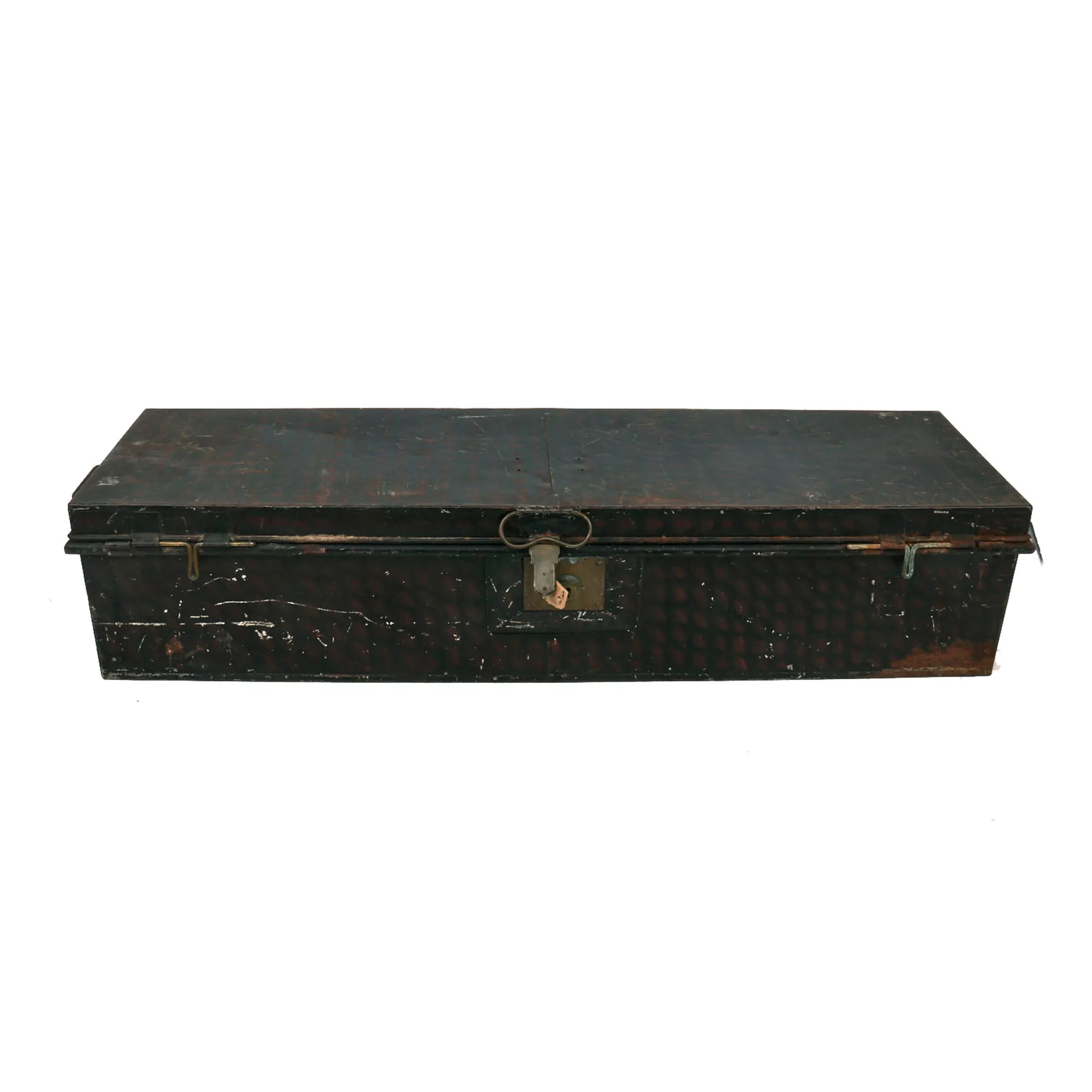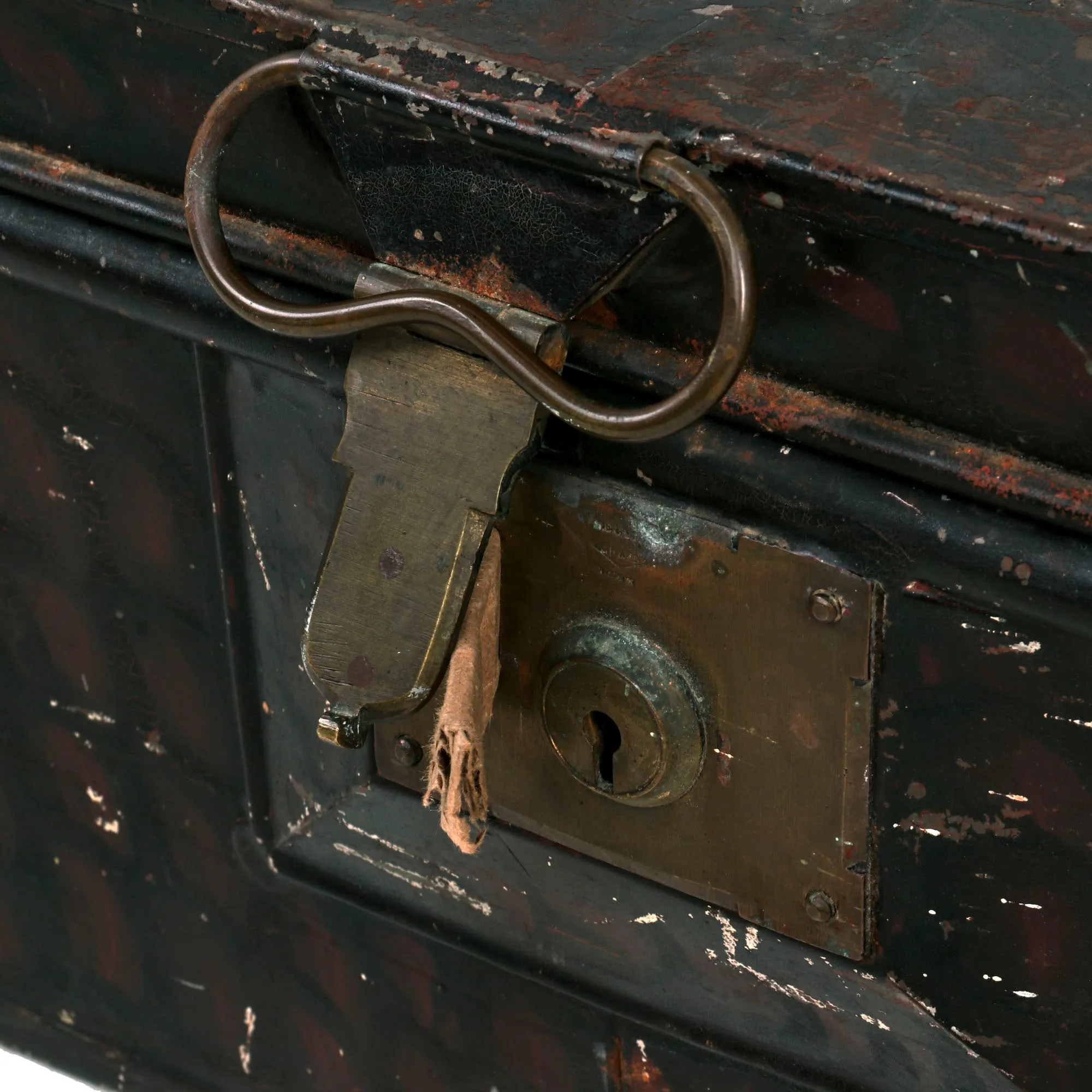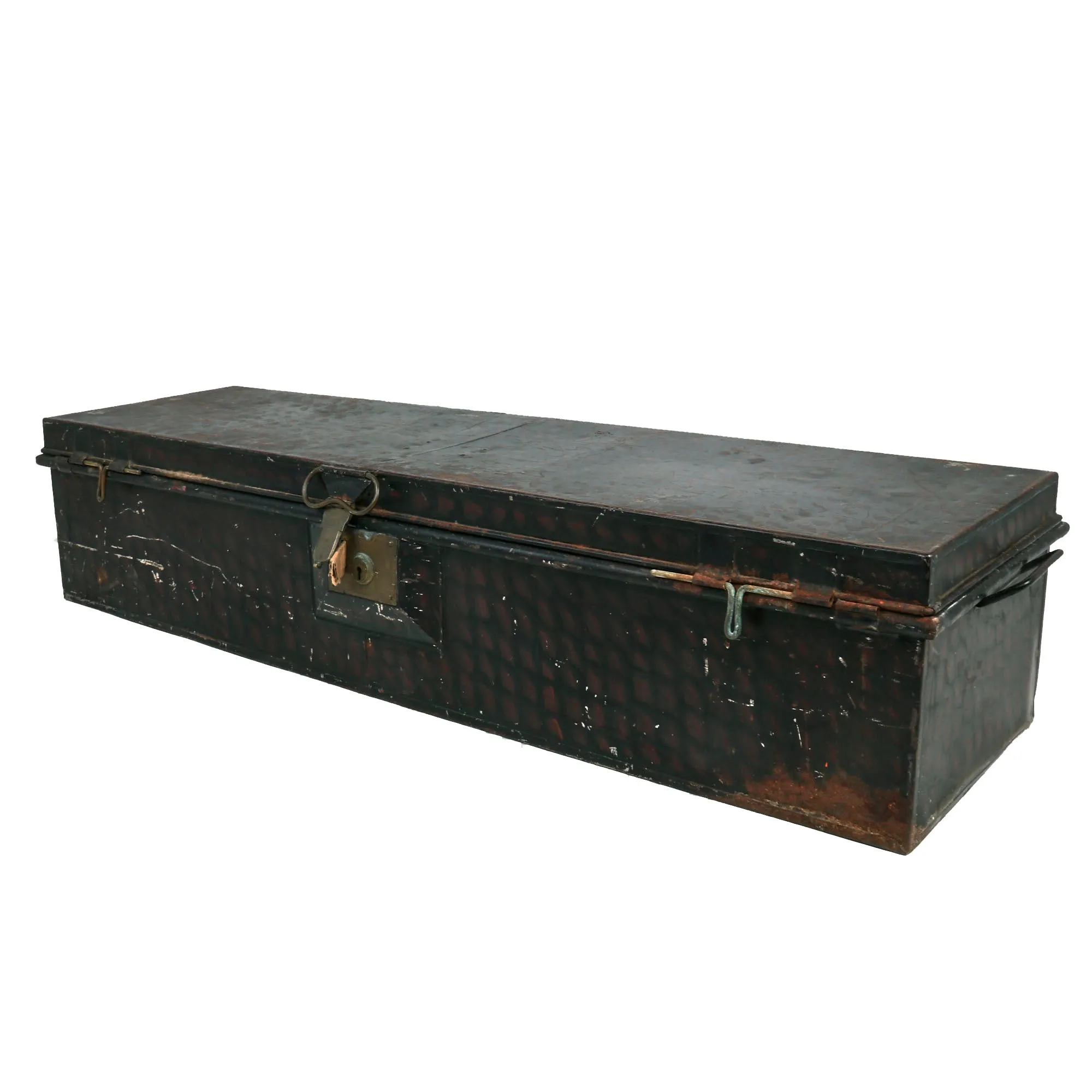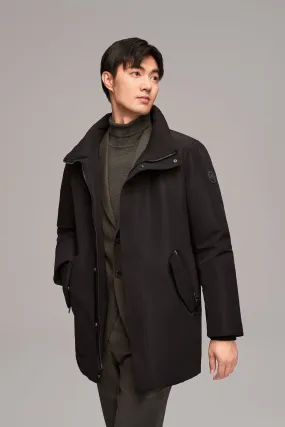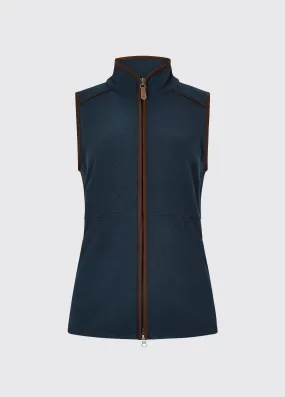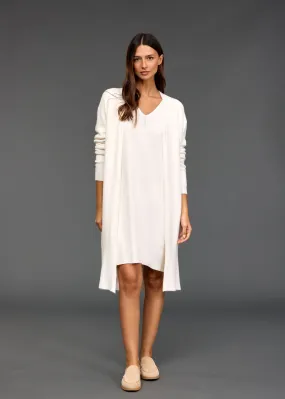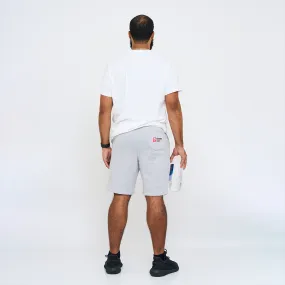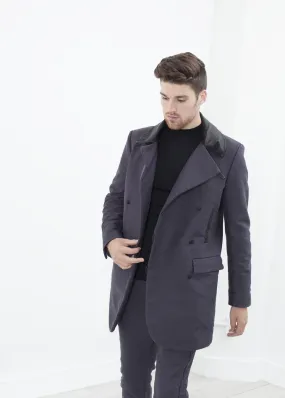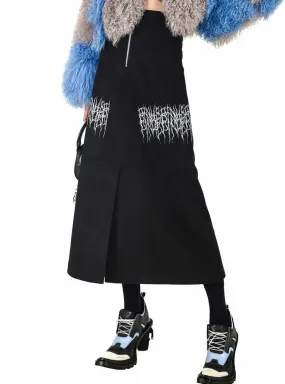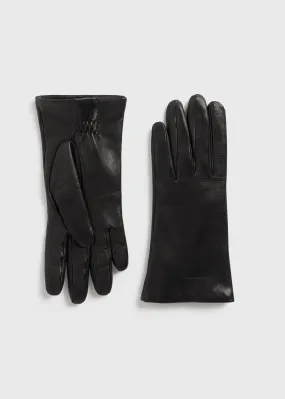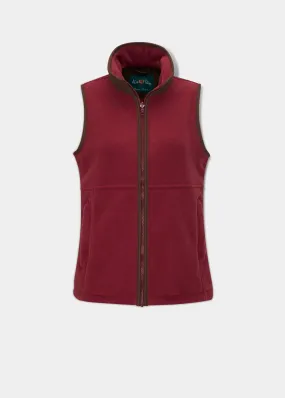Original Items: Only One Group Available. This is an excellent uniform grouping for a Royal Artillery Colonel, as seen worn during the Boer Wars in the late Victorian Era. The grouping consists mainly of uniform items and accouterments but does have lovely period tin transit/storage chests that came with the uniforms, as well as a Pre 1881 blue cloth spiked helmet!
The Second Boer War saw attempted application of bombardment as an alternative to the use of ground forces. In most battles fought during the conflict this was proved not to be possible. There was competition from the other side's ability to undertake evasive measures. The opponent was able to use cover to protect himself and hide his position. Nonetheless, the tactic of the creeping barrage, used at the Relief of Ladysmith, has been described as "revolutionary".
The grouping consists of the following:
- Victorian Royal Artillery Officer's Full Dress Uniform Jacket: Full dress is the most elaborate and traditional order worn by the British Army. It generally consists of a scarlet, dark blue or rifle green high-necked tunic (without chest pockets), elaborate headwear and other colorful items. It was withdrawn from a general issue in 1914, but is still listed in the Army Dress Regulations, which speaks of it as "the ultimate statement of tradition and regimental identity in uniform" and the "key" to all other orders of dress.
The condition of the tunic itself is quite worn from a mixture of service wear and age. The main concerns about condition is the stitching is loose in areas, the lining is torn/detached extensively in areas with moth nips and fraying with one of the epaulets detached. The epaulets bear lovely bullion insignia consisting of 2 pips and a crown signifying the rank of Colonel in the British Army. There is an extremely faded nametag on the cuff style collar with only a few letters being able to be read.
- Victorian Royal Artillery Mess Dress Jacket and Waistcoat: Mess uniforms first appeared in the British Army in about 1845, initially utilizing the short shell jacket worn since 1831. This working jacket was worn open over a regimental waistcoat for evening dress. The original purpose was to provide a relatively comfortable and inexpensive alternative to the stiff and elaborate full-dress uniforms then worn by officers for evening social functions such as regimental dinners or balls. With the general disappearance of full dress uniforms after World War I, mess dress became the most colorful and traditional uniform to be retained by most officers in British and Commonwealth armies. Immediately after World War II the cheaper "blue patrols" were worn for several years as a mess dress, but by 1956 the traditional uniforms had been re-adopted.
The uniform set is in fantastic condition and is even displayed nicely on a styrofoam mannequin torso. There epaulets bear the same insignia pertaining to the rank of Colonel and are firmly attached. All buttons, hooks and loops appear to be present. There is slight tarnishing on the brass components but is otherwise offered in wonderful condition with a solid lining.
- British Victorian Army Artillery Officer Blue Cloth Dress Spike Helmet by Hawkes and Co - Pre-1881: This is a well used but solid condition Victorian era British Army Officer Blue Cloth Spiked helmet which is with its spike finial and without scaled chinstrap. Though ball top finials were worn by Service Corps (Medical, Veterinarian, Artillery etc.), pre-1881 Artillery helmets had spiked tops. The chin strap lugs and spike base ends are all properly adorned with embossed roses with one of the sides missing unfortunately. This helmet has gilt brass mounts used on all regular Army helmets.
The front of the helmet has the correct artillery plate, which is the version with the artillery piece from the design. Body consists of cork covered with blue wool, trimmed with brass, but the rear skirt trim is missing. Liner is calfskin leather and silk. Interior of the front and rear visor is trimmed with fine green dyed leather with little color retained, and the interior body liner with canvas. The rear skirt does have deformities and minor cracking present.
The interior has a maker’s mark for HAWKES AND CO of Piccadilly. HAWKES & Co. founded in 1771 by Thomas Hawkes in Brewer Street, London, moved to 14 Piccadilly in 1794 and again to it's present location at 1 Saville Row in 1912. Today the Company is known as GIEVES & HAWKES and is still one of London's most renowned tailors.
The helmet is in lovely condition for its age. Showing signs of honest use, and wear from storage and handling over the last 120 years.
- British Victorian Era Royal Artillery Officer's Document Sabretache With Cover: A Sabretache, first known as a Hungarian TARSOLY, is a leather-covered board behind which a leather pocket for documents is located. The exposed facing is typically covered in magnificent gold and silver thread embroidery depicting the Monarch's or Regimental Coat of Arms.
The term "HUSSAR" comes from the Hungarians whose 17th and 18th century cavalrymen inspired all of Europe. By the time of the Napoleonic Wars began almost every Nation in Europe had Light Cavalry "Hussar" Regiments.
The uniforms of the day were fabulous, ornate and very form fitting so pockets were not common or complimentary. Ever wonder why an Englishman sometimes carries his hanker-chief up his sleeve?
In order to preserve the Officer's pleasing lines a "Sabretache" was issued to hang from his belt on the left side together with his sword to accommodate all paperwork. the back of the hard board forming a perfect writing surface when in the saddle. Sabretaches are greatly sought after and often sell for thousands of dollars depending on the regiment and the period of use.
What we offer here is the decorated board with cover, this one dating from Queen Victoria's time and was worn by an Officer in the "ROYAL ARTILLERY". It bears the complete Royal Artillery Regimental arms showing the Royal Cypher with Queen's Crown over gilt brass
Cannon insignia and the Regimental Motto amid lush embroidered foliage. Absolutely genuine probably over 150 years of age, very hard to find at anything like a reasonable price in today’s market.
- British Victorian Royal Artillery Swagger Stick: A swagger stick is a short stick or riding crop usually carried by a uniformed person as a symbol of authority. A swagger stick is shorter than a staff or cane, and is usually made from rattan. Its use derives from the vine staff carried by Roman centurions as an emblem of office.
This example measures 26 ¾” and is offered in great condition but unfortunately has a crack in it towards the middle.
An incredible Victorian Boer War Era grouping, perfect for the early Royal Artillery collector. It comes complete with a lovely transport tin, measuring 41 1/2" x 12 1/2" x 9". Comes more than ready for further research and display.




